The Fitbit Sense is both a departure from the norm and not, for Fitbit. On one hand, it’s vastly more expensive than any recent Fitbit smartwatch with vastly more sensors. Yet on the other end, the interface and day to day aspects basically feel like any other Fitbit. If you’ve used a Versa or Ionic unit in the past few years, this isn’t much different usage-wise.
But Fitbit is betting that all of the underlying sensor tech is what will draw you to the Sense. Whether or not they can pull that off will directly dictate the near-term future of the company. As you remember, Google’s acquisition of Fitbit hasn’t been approved by regulators, and as such, they’re still largely operating in their own little bubble.
The challenge is – with a name that could be derived from Sensing or Sensor, two core questions arise, first: Is it accurate?
And second: Does it give you actionable guidance from that data?
And as the title you’ve by now read implies, the answer to both is a resounding no.
So, come along for the ride on the review of this watch. Or, simply hit the Play button below.

Finally, note that Fitbit sent out a media loaner Fitbit Sense unit for me to poke at. Once I’m done I’ll package it up and get it back to them. Just the way I roll. If you find this review useful, simply hit up some of the link at the end of the post. Or, consider becoming a DCR Supporter. With that – let’s cover all the newness.
What’s new:
The Fitbit Sense is literally the most correctly named wearable ever. Almost every new feature the company added this year is about sensing data or some metric, and ideally making sense of that data (which, in some cases will require a Fitbit Premium subscription). Here’s the quick run-down of what’s new compared to previous Fitbit smartwatches (this technically would be above the Ionic, but it’s probably more akin to a super-high-end Versa series):
– Added ECG Functionality
– Added Skin Temperature Sensors (on wrist)
– Added High/Low Heart Rate Notifications
– Added Breathing Rate (per minute), while you sleep
– Added New Stress Management Tracking
– Added EDA Scan app for tracking electrodermal activity
– Added Heart Rate Variability (HRV) Tracking
– Added new PurePulse 2.0 optical HR sensor (new sensor)
– Adding Google Assistant later this year (previously had Amazon Alexa, still does have that)
– Added ability to take calls from wrist using mic/speaker (planned Winter 2020-21)
– New AMOLED display with integrated ambient light sensor
– Display is Corning Gorilla Glass 3, and bezel is polished stainless steel
– Changed accessory bands to have better quick release system
– Includes 6-month free trial of Fitbit Premium
And in case you were wondering how it differs from the Fitbit Versa 3 (full in-depth review here), ask and you shall receive:
– Fitbit Sense has ECG Functionality
– Fitbit Sense has New Stress Management Tracking
– Fitbit Sense has High/Low heart rate notifications
– Fitbit Sense has EDA Scan app for tracking electrodermal activity
– Fitbit Sense has dedicated skin temp sensor (versus estimated temp in Versa 3)
– Fitbit Sense has minute by minute skin temp variations (Fitbit Versa 3 has less granularity, but still has skin temp variations)
– Also, the Fitbit Sense is a bit heavier due to the ECG & EDA sensors
Plus, things that were on recent Fitbit units are also here as well:
– Includes GPS built-in (12 hours active GPS time)
– Music storage built-in (Pandora & Deezer offline, Spotify is still phone control only)
– 24×7 HR Tracking, Steps, Sleep, Sleep Stages, and usual activity tracking
– Always-on Display Capable (but cuts into battery life claims)
– Supports Fitbit OS App Store
– Includes Active Zone Minutes (was rolled out last year in some devices)
– Water-resistant to 50 meters
– NFC Contactless Payments via Fitbit Pay
As for battery life, the company claims 6 days of battery life with the non-always on screen setting selected. And, before we dive too far, here’s the full pricing list for the Fitbit lineup this year:
Now that the overview of new is done, we’ll start with the usual review bits and then dig deeper and deeper in each section.
What’s in the box:
As a connoisseur of boxes, I actually really like the Fitbit Sense box. It’s clean, shows off the product, and has the core unique bits of the product on the front. The back is equally useful in terms of listing features and showing screens. Even if some of those features aren’t quite here yet.
Cracking it open and you’ll find the watch, band, and charger looking back up at you:
And here’s a closer look at those parts. Note in particular that there’s both a watch and on the watch already, and then the larger sized band in the box in case you want it. For this review my wrist worked with the smaller sized band just fine.
And here’s a closer look at that band/clasp. Don’t worry, we’ll talk more about that later.
Also, you can plainly see the optical HR sensor on the back.
With that, let’s start using it.
The Fitbit Basics:
If you’ve been around the Fitbit block before, then virtually everything in this section is old hat to you, especially if you’ve had a Fitbit Versa or Ionic series watch, in which case almost everything here is the same.
Starting with some of the mechanical pieces, the watch maintains the semi-iconic Fitbit squircle shape (a square + circle). Sure, some people might think of it as Apple Watch-esque in terms of bezels and such, but I think for the most part it’s unique.
The Sense is a touch screen device, but also has a single button on the left edge, where there’s a small divot you see above. I’ve mostly found this button in a super awkward place, because it’s on the lower portion of the watch.
So basically you have to twist your finger under the bezel of the watch against your arm to activate it. I don’t understand why someone thought this would be a good place for a button. Also, while you might think this is where you’d use your thumb (and you can), it’s still awkward because it’s *UNDER* the edge of the watch, which means you bend your thumb’s knuckle into your wrist/arm to use it.
The unit ships with the band you see throughout this review. It’s sort of a blend of an older Fitbit watch band with an Apple Watch band. I’m definitely not a fan. I was all good with the Apple Watch copy-elements, but the material drags on the hairs of your skin when you try and stick it back in the hole.
Of course, Fitbit sells you premium straps too in all assortment of pretty materials. So I’ll give one of those a whirl and report back.
On the back is a new optical heart rate sensor, called PurePulse 2.0. I’m gonna dive deep on that in the relevant heart rate sections.
The Fitbit Sense is built atop FitbitOS, though is slightly updated from the Versa/Ionic in terms of user interface and looks. On the whole, I like the slight updates to the user interface, such as the swipe-down notifications and control center, which are clearer.
For smartphone notifications you can’t respond on iOS due to Apple limitations (my understanding is you can on Android), but you can dismiss them away. Also, while not implemented until sometime this winter, you’ll be able to answer calls on your Fitbit Sense using the microphone if your phone is within range (there’s no cellular connectivity inside the Sense).
Watch faces can be customized from the Fitbit app, and there’s a pile to choose from, including from 3rd parties via the Fitbit app store.
The watch faces will differ significantly of course, all showing different elements. I actually liked the default Fitbit Sense watch face, as I felt it conveyed things pretty well. Though, I had to switch to the SpO2 watch face in order to get SpO2 data (more on that later).
You’ll swipe to the right to access your apps. Everything is basically an app on the Fitbit Sense. So even exercise is considered an app. There are Fitbit apps (like exercise or settings), while also 3rd party apps you can install too. Like most wearable apps, the bulk of these are pretty simplistic.
Of course, being a Fitbit, you’re likely wearing it to track activity. You can access the core stats by swiping upwards, which shows you steps, calories, floors, distance, and active zone minutes. All of these can be shown against your daily goal.
Alternatively, there’s also the ‘Today’ screen that mostly shows you the same stats, but adds in sleep, heart rate, hourly activity, food & water tracking, weight tracking, and core temp tracking. All the things essentially.
You can also see all of this within the Fitbit app too of course:
And it’s there that you can do longer-term trending of it over days/weeks/months:
This includes everything from steps to distance, as well as 24×7 heart rate. You can see here this double-workout day showing up within the overall view of the day:
Similarly, sleep tracking shows up on both the watch (for last night), as well as longer-term. You can see a break-down of the sleep score pieces and how they all contribute. This is well executed, and should serve as a guiding light for how many of the newer health features on the Sense should be implemented (as we’ll talk about in the next section)
And, I like that I can see both high level and detailed information about sleep on the watch:
Interestingly, on Sunday night it incorrectly listed the time I fell asleep by about two hours (showing 2:56AM instead of ~12:56AM). Not sure why, but I figured I’d just adjust it (which, you can do easily). However, upon doing that it lost my sleep score for the night. What’s quirky about this is that it actually shows I was asleep when I did that (and shows properly that I actually was awake a few mins at the beginning).
Ok, with that all set, let’s go even deeper on the new health features.
Advanced Health Features:
Now I’m going to try and do a Tour de Sense here with all these new features, covering the good, the bad, and the ugly. The biggest challenge though is decoding which features are premium and which ones aren’t. For the most part, all features are available for all users. However, where it gets tricky is the length of data that’s shown. Meaning, you can see skin temperature data, but if you want to see that longer-term with trends – it requires Fitbit Premium. And there are dozens of these situations.
Adding to the complexity is that just this morning Fitbit announced that all users will get the new “Health Metrics Dashboard…for free in the coming months”, this was previously a Premium feature. Of course, that still doesn’t clarify what features are Premium and what aren’t. I asked Fitbit for a clear-cut table/spreadsheet/something. While the didn’t have that, they did have a best-effort text variant, which I’ve included at the end of this section.
Also, some things aren’t enabled yet. For example, ECG functionality isn’t enabled yet. The company just received approval last week, and is slating to enable it in watches in October for select countries (USA/A number of European countries/Hong Kong/India).
In any case, let’s dive into the first big-ticket item touted quite a bit, which is the EDA Scan, which will measure electrodermal activity (roughly another word for galvanic skin response). That then feeds into the stress management dashboard pieces. Essentially they’re measuring the micro changes in electrical resistance of the skin based on things like sweat. This data is then combined with other factors like heart rate or blood pressure.There are different modes you can run it in, but the two-minute quick scan is what I used daily:
To to do, you’ll start the app on the watch, and then rest your palm on the face of the watch (the top of it). At the end of two minutes, it’ll vibrate a bunch letting you know it’s excited. I mean, done.
That’s sorta the first piece of the puzzle. By itself it actually doesn’t tell you anything per se. Mostly, it just thanks you. However, it’ll ask you to log your stress level, using a smiley face system:
However, in the watch it does show this ‘EDA Responses’ bit, but you can’t tap on it to understand what it means – nor get any other data.
Also, it does show you the starting/ending heart rate:
Mostly though it tells you to go to the Fitbit app on your phone. So, I do that and go into the app and then the Stress Management section, and despite letting it sync for a while now – it still doesn’t show my score there. So, we’ll have to look at a previous day’s score. You can see my score of 86, as well as the ‘Neutral’ feeling I gave it (technically called a ‘Reflection’).
The score (1-100) has three components:
Responsiveness (up to 25 points): This comes from all the sensor data, including heart rate variability (HRV) data, resting HR data (and two metrics based on that), and then the skin EDA data from the EDA skin.
Exertion (up to 20 points): This looks at daily steps, weekly activity norms, and fitness fatigue score
Sleep Patterns (up to 55 points): This looks at REM & Deep Sleep from the night before, sleep debt over time, and restlessness during the night.
Also to add to the confusion, you get a different score for sleeping within the general sleep area that’s 1-100 by itself. So that score isn’t the same as this score. It’s a double-scoring system.
If it’s not clear by now, this is confusing AF. There are so many elements of this that I literally don’t understand what it’s trying to tell me, and we’re half-way through this section. You can’t actually dig into any of the scores and understand which piece is impacting which. And is it saying this is all just about stress, or are these about other elements? Literally, every day I wear this watch I become more confused. I was less confused when I started wearing it. But wait, there’s more.
Then we’ve got skin temperature. This feature occurs behind the scenes while you sleep. Note that skin temperature is different than core temperature. Core temperature is what you’d normally measure with a thermometer of sorts, whereas skin temperature is simply measuring the surface of the skin. In the case of Fitbit, they only measure skin temperature at night. And more so, they don’t actually give you the exact skin temp. Instead, it first generates a baseline for three nights, and then it tells you your skin temperature relative to the baseline. The baseline will extend though to include the trailing 30 nights worth of data over time.
I’m honestly not entirely sure what to do with this yet (and in the app, Fitbit doesn’t offer any insights). Interestingly though, the last two nights I slept with the window open, which made it a wee bit chillier by the time I woke up in the room. Versus Sunday when I woke up, and previous days the window was closed and it showed closer to baseline.
As for core temperature, Fitbit can’t measure that. Though interestingly, they offer both an on-watch and on-app option for doing so, if you have a thermometer and are ready to wield it:
By logging it in either location, you can then plot those trends over time. The idea here likely being that if you’re sick you can see how this trends compared to other metrics.
Next, there’s the resting heart rate and HRV data. Both of these are only measured at night with the Fitbit Sense, and you can see the nightly average value (for sleeps longer than 3 hours). This is part of the so-called ‘Health Metrics’ dashboard that was premium only but is slated to be free. In that same dashboard is the resting heart rate data too:
Also in there are summary views of breathing rate and nightly SpO2 values, also only measured at night.
Speaking of SpO2 – arguably the most baffling implementation I’ve seen to date. Despite years of hype here by Fitbit around SpO2, they make it surprisingly difficult to gather. First off, by default, your watch won’t be tracking SpO2. Instead, it’ll be set to use a default Fitbit Sense watch face, which I actually liked. Why am I talking about watch faces you ask? Because the Sense requires that you install and then change your watch face using the smartphone app to a specific SpO2 watch face in order to gather data. Here’s that watch face:
Once that’s done, then you can wait till the next night to gather the data. For real, the watch doesn’t just gather it at night like Apple, Garmin, and others. It’s literally only available with that watch face. Adding injury to insult, that watch-face constantly hangs and freezes the Fitbit Sense. Watch the video to see what I mean, you have to wait 3-5 seconds anytime you want to interact with it.
In any case, the next morning you wake-up and you get the watch face showing your SpO2 values as seen above.
There isn’t any method to spot-check the SpO2 values during the day. Fitbit says that’s because they get higher quality data at night, which is averaged over a 5-minute period for each reading. Note that you can’t see or dive into those readings or how they might shift throughout the night. It simply shows the range above.
Finally, I’ll mention the ECG function, but can’t test it at this time. Once Fitbit enables it in October, I’ll circle back to it. But essentially it’ll work like Apple’s implementation in that you use your other hand to touch the watch (the bezel in this case), which completes the circuit. It’ll then give you a count-down timer to wait while it measures and records the data. Afterwards you’ll get a quick diagnosis with recommended next steps. The plot is also available to export for your doctor.
Like the Apple Watch, this specific feature has been certified by the FDA (and other global governing bodies) as a medical device, hence why it’s only available in specific countries. But, Fitbit’s stance (like Apple’s) is that you should take these results to a doctor for further confirmation/testing/next steps.
Again, we’ll come back to that once it’s lit up in the watch and I can give it a whirl.
Sport Usage:
The Fitbit Sense has two ways to track a workout. The first is where you just let the watch automatically figure out you’re doing an activity based on crossing a set threshold, such as 15 minutes of cycling. That’s what I use each morning for dropping off the kids by bike. I don’t bother to start a GPS activity, but it tracks it as a cycling activity behind the scenes (sans-GPS track).
The second option, and the one you’re gonna wanna use if you want to review all the details, is by going in and starting an actual workout under ‘Exercise’, within the Fitbit apps:
From here you’ll get to choose a given sport mode, for example running or cycling. Some modes have GPS enabled, while others are effectively indoor only. Some utilize sensors for more detailed metrics (like pool swimming), whereas others are basically just using the heart rate sensor. In my case, I largely did run and ride workouts.
After you’ve selected a sport, you can customize various aspects of it. This includes things like the exact metrics you want displayed (on a three-panel data field, which you can tap to iterate the middle metric). None of these are super-advanced metrics, but they are the core metrics you’ll likely want (Elapsed Time, Distance, Pace, Pace Average, Heart Rate, Calories, Steps, Time of Day, Lap Time, Lap Distance, Active Zone Minutes).
It also includes settings such as auto pause, GPS enablement, and auto lap (which can further be customized too, even basing laps on calories).
To give Fitbit credit here, while this isn’t as much customization as a Garmin/Suunto/Polar/COROS sport-specific watch, it’s generally more customization than the default apps that Apple provides for the Apple Watch.
Once you’ve got GPS signal it’ll show you a confirmation that you’re ‘Connected’ to satellites, and you’re ready to run (or ride…or hike, or whatever):
Remember that the display being on/off is configurable within the settings, as is brightness too. I used both the dim and normal modes for all my runs and even on bright sunny days I didn’t have any issues seeing the screen. Taking photographs was tougher, but that’s often the case with AMOLED displays while running. So, here’s a static shot instead, showing the three metrics. Again, you can iterate the middle metric by simply tapping on the screen, which mostly worked. Mostly.
Once you’re done it’ll give you a summary of your workout metrics. It doesn’t show any little GPS map or such
Back in the Fitbit Charge 4 era they introduced the concept of Active Zone minutes and Intensity Zones. Essentially this is partially a rebranding the American Heart Association and World Health Organization’s goal of 150 minutes of exercise per week. Other wearables have long done this based on the same 150-minute goal. These Active Zone minutes are based on a combination of age and heart rate, whereby in higher (more painful) zones you get more minute credits than in lower zones. It’s like earning frequent flyer miles, whereby more expensive tickets get more miles. Here’s an example chart from that support page explaining how it works:
I don’t think it’s a bad concept, and that segues right into the next bit which is the Heart Rate Zone definitions. You’ll see these zones in numerous places throughout the device, usually next to that triple-up-arrow icon you see in the chart above (which means Active Zones). For example, while in a workout you’ll get notifications each time you change zones. You can lightly customize the upper and lower bounds of the more intense zones within settings on the app (tap your profile pic in the app, and scroll way down for like 5 years). Also, for fun, this is where you set high/low abnormal heart rate notifications (non-workout).
So if you were doing an interval workout, you’ll get notifications as you go in/out of the peak/cardio zones and potentially down into the Fat Burn zone. Then, afterwards on the device, you’ll see your workout totals, including your active zone minutes (but not zone-specified):
You can also see the zones within the Fitbit app afterwards looking at your workout summary information. This includes pace or heart rate zones, which is pretty cool, and was introduced last spring. So cool in fact that in recent weeks we saw Garmin mirror this functionality in their smartphone app.
In the app you can also look at pace splits for laps (even on the map), as well as other metrics from your workout:
This workout will also be synced to apps like Strava if you’ve got it connected.
Now as you’ve seen elsewhere in the review, aside from the new health features, there hasn’t been much changed for other aspects (including sports). So if you’re looking for changes like adding support for heart rate straps or cycling sensors, those don’t exist. Which is unfortunate, because Apple supports heart rate sensors – which, spoiler, given the accuracy of the Fitbit Sense optical HR sensor – they should seriously consider implementing as well.
Nonetheless, for most sport usage in terms of getting basic information about your current distance, pace/speed, or similar metrics, the Fitbit Sense does so in a fairly easy to understand manner. If you’re looking for features like complex structured intervals or navigation/routing, this isn’t really the watch for you sport-wise.
GPS & HR Accuracy:
There are days where I’d rather just skip spending 45 minutes to write this section and say the following:
Fitbit Sense Heart Rate Accuracy: Dumpster fire
Fitbit Sense GPS Accuracy: Mostly just fine.
And then you’d know what you needed to know, and I’d get back 45 minutes of my life to eat ice cream (or donuts), or go for a run, or go enjoy a nice swim on this first warm day of fall.
Unfortunately, I get the impression you still want all the data and details. So, I’m going to split the difference and very briefly illustrate the situation at hand. If you do want to dig beyond that, there are links to each set that allow you to do so. But really, there’s no reason to.
First example, this relatively easy paced run, compared to the Garmin HRM-PRO chest strap and Apple Watch SE, both of which were fairly similar, except the Fitbit Sense was often 20+ bpm high.
Here, let me zoom in a bit:
Or another relatively easy paced run, in this data set compared against the Garmin HRM-PRO chest strap. You can see how for the first 10-12 minutes it’s all over the map – in some cases by 20BPM. It’s nuts.
And zoomed in. And having a third device to compare against (more soon), I can say without question the Fitbit is wrong here.
Or we can go with one of my other faster paced workouts, with a few intervals tossed in. And the Fitbit Sense was wrong almost the entire time, by at a minimum 10bpm (which, is a lot). And sometimes 15-20bpm. It’s the yellow line at the bottom.
In fact, the only thing that performed worse than it was the Whoop 3.0 strap, because…well, Whoop. In fact, during a few runs, I started wondering if Fitbit had licensed the tech from Whoop, since it was often equally as bad and often failed in semi-similar ways. The yellow line of the Fitbit Sense, and the blue line below are similar during these intervals. Low, slow, and inaccurate.
Heck, even the Apple Watch Series 6 *Not even on my wrist* actually can beat the Fitbit Sense on my wrist. Check out this plot below, with the Fitbit Sense spiking above everyone else all the time. For this set, I had placed the Apple Watch Series 6 atop my hand for extra GPS data (so, that unit’s HR data was throwaway), and it *still* managed to nail the HR data correctly. Someone give Apple an award there.
Look, it’s bad. And even when it somewhat appears close above – that’s only because you’re skewing your expectations by the parts it’s 10-20bpm off. Being 3-5BPM off looks ‘normal’ by comparison, but that’s still wrong. And bad.
Now, GPS accuracy? That actually isn’t so bad. For the most part, as long as you’re not coming out of a tunnel or from under a bridge, the GPS is mostly acceptable. A few semi-rare cut corners here and there, but overall it’s likely fine for most people buying this device.
You can see the tracks above are nice and crispy. Same below for the most part:
However, the one area it really struggles is coming out of a bridge or tunnel. In that case, it produces wonky tracks every time for a short distance. Here in green:
And here in yellow from under the underpasses:
And again the first bridge on a different day, this time in red:
So, in quick summary here – the GPS is fine for most purposes with the exceptions noted above, while the heart rate isn’t fit for any purpose I’d use it for.
What I don’t know is if (or when) Fitbit will be able to fix the heart rate issues. The general theme of the Fitbit Sense is that everything is a bit half-baked. So with an entirely new optical HR sensor, that was one more piece of the puzzle they’ve undoubtedly been battling, and whether this is an easy short to medium term fix, or a more substantial hardware or longer software algorithm fix is required.
Fitbit has started to dig into my data sets, though, in looking at some of the other reviews posted today, the theme seems to be somewhat common.
(Note: All of the charts in these accuracy portions were created using the DCR Analyzer tool. It allows you to compare power meters/trainers, heart rate, cadence, speed/pace, GPS tracks and plenty more. You can use it as well for your own gadget comparisons, more details here.)
Product Comparison:
I’ve added the Fitbit Sense into the product comparison database, allowing you to compare it against other products that I’ve reviewed in the past.
For the purposes of below I’ve compared it against the Garmin Venu, Apple Watch SE – which are the ones most people will be comparing it against from a sports/fitness standpoint. I’ll likely add in the latest Samsung Galaxy Watch Active 2 shortly.
Note that with all these watches – but especially the Apple Watch, there are many cases below where “with 3rd party apps” can be used. The same is largely true of Garmin, Samsung, and somewhat with Fitbit. But the Apple Watch tends to offload more core fitness functionality to 3rd party apps than the others. I’ve tried to thread the needle of apps that I roughly know exist where I’ve listed that. But it’s not perfection in terms of knowing every app on earth. Ultimately, I don’t think any consumer does (or should). Plus, we’ve actually seen a pulling back of wearable apps from companies over the last year (basically, they stop updating them). Making it even harder to know an up to date app from a dysfunctional one dying on the vine.
| Function/Feature | Fitbit Sense | Apple Watch Series SE | Garmin Venu |
|---|---|---|---|
| Copyright DC Rainmaker - Updated October 18th, 2023 @ 10:10 am New Window | |||
| Price | $329 | $279 | $299 |
| Product Announcement Date | Sept 2020 | Sept 15th, 2020 | Sept 5th, 2019 |
| Actual Availability/Shipping Date | Sept 23rd, 2020 | Sept 18th, 2020 | Sept 5th, 2019 |
| GPS Recording Functionality | Yes | Yes | Yes |
| Data Transfer | Bluetooth Smart/WiFi for music | Bluetooth Smart | USB, BLUETOOTH SMART, WiFi |
| Waterproofing | 50m | 50m | 50 meters |
| Battery Life (GPS) | 12 hours | 6hrs GPS on time (18hrs standby) | 20 hrs (just GPS), up to 6hrs GPS+Music |
| Recording Interval | 1-second | Varies | 1s or Smart Recording |
| Dual-Frequency GNSS | No | ||
| Alerts | Visual/Vibrate | Vibration/Audio/Visual | Vibrate/Visual |
| Backlight Greatness | Great | Great | Great |
| Ability to download custom apps to unit/device | Yes | Yes | Yes |
| Acts as daily activity monitor (steps, etc...) | Yes | Yes | Yes | Voice Integration | Fitbit Sense | Apple Watch Series SE | Garmin Venu |
| Has Mic/Speaker | Yes | ||
| Can make/receive calls | With phone's cellular | ||
| Voice Assistant | Amazon Alexa | Music | Fitbit Sense | Apple Watch Series SE | Garmin Venu |
| Can control phone music | Yes | Yes | Yes |
| Has music storage and playback | Yes | Yes | Yes |
| Streaming Services | Pandora, Deezer | Apple Music | Spotify, Amazon Music, Deezer | Payments | Fitbit Sense | Apple Watch Series SE | Garmin Venu |
| Contactless-NFC Payments | Yes | Yes | Yes | Connectivity | Fitbit Sense | Apple Watch Series SE | Garmin Venu |
| Bluetooth Smart to Phone Uploading | Yes | Yes | Yes |
| Phone Notifications to unit (i.e. texts/calls/etc...) | Yes | Yes | Yes |
| Live Tracking (streaming location to website) | No | With 3rd party apps | Yes |
| Group tracking | No | No | No |
| Emergency/SOS Message Notification (from watch to contacts) | No | Yes | Yes |
| Built-in cellular chip (no phone required) | No | Yes (with cellular version) | No | Cycling | Fitbit Sense | Apple Watch Series SE | Garmin Venu |
| Designed for cycling | Yes | Yes | Yes |
| Power Meter Capable | No | No | With some Connect IQ apps |
| Speed/Cadence Sensor Capable | No | No | Yes |
| Strava segments live on device | No | No | No |
| Crash detection | No | Yes via 'Fall Detection' | Yes | Running | Fitbit Sense | Apple Watch Series SE | Garmin Venu |
| Designed for running | Yes | Yes | Yes |
| Footpod Capable (For treadmills) | No (but has treadmill functionality) | With 3rd party apps | Yes |
| Running Dynamics (vertical oscillation, ground contact time, etc...) | No | No | No |
| Running Power | No | With 3rd party apps | No |
| VO2Max Estimation | Yes, via app | Yes | Yes |
| Race Predictor | No | No | No |
| Recovery Advisor | No | No | No |
| Run/Walk Mode | No | With 3rd party apps | Yes |
| Track Recognition Mode | No | Swimming | Fitbit Sense | Apple Watch Series SE | Garmin Venu |
| Designed for swimming | Yes | Yes | Yes |
| Openwater swimming mode | No | YEs | No |
| Lap/Indoor Distance Tracking | Yes | Yes | Yes |
| Record HR underwater | No | Yes | Yes |
| Openwater Metrics (Stroke/etc.) | No | Basic stroke type only | No |
| Indoor Metrics (Stroke/etc.) | Yes | Basic stroke type only | Yes |
| Indoor Drill Mode | No | No | No |
| Indoor auto-pause feature | No | Yes | No |
| Change pool size | Yes | Yes | Yes |
| Indoor Min/Max Pool Lengths | 10m/y-100m/y | 1y/m to 1,500y/m+ | 13M/15Y TO 150Y/M |
| Ability to customize data fields | Yes | Very limited | Yes |
| Captures per length data - indoors | Yes | Yes | |
| Indoor Alerts | Yes (distance) | Yes (goals) | Yes | Triathlon | Fitbit Sense | Apple Watch Series SE | Garmin Venu |
| Designed for triathlon | No | Not really | No |
| Multisport mode | No | Yes | No | Workouts | Fitbit Sense | Apple Watch Series SE | Garmin Venu |
| Create/Follow custom workouts | No (Premium Coached only) | With 3rd party apps | Yes |
| On-unit interval Feature | No | With 3rd party apps | Sorta (Pre-loaded) |
| Training Calendar Functionality | No | With 3rd party apps | Yes | Functions | Fitbit Sense | Apple Watch Series SE | Garmin Venu |
| Auto Start/Stop | Yes | Yes | Yes |
| Virtual Partner Feature | No | Sorta (Pacing feature) | No |
| Virtual Racer Feature | no | No | No |
| Records PR's - Personal Records (diff than history) | No | No | Yes |
| Tidal Tables (Tide Information) | No | No | No |
| Weather Display (live data) | Yes | Yes | Yes | Navigate | Fitbit Sense | Apple Watch Series SE | Garmin Venu |
| Follow GPS Track (Courses/Waypoints) | No | With 3rd party apps | No (but some 3rd party apps can) |
| Markers/Waypoint Direction | No | With 3rd party apps | No |
| Routable/Visual Maps (like car GPS) | No | With 3rd party apps | No |
| Back to start | No | With 3rd party apps | YEs |
| Impromptu Round Trip Route Creation | No | With 3rd party apps | No |
| Download courses/routes from phone to unit | No | With 3rd party apps | NO | Sensors | Fitbit Sense | Apple Watch Series SE | Garmin Venu |
| Altimeter Type | Barometric | Barometric | Barometric |
| Compass Type | N/A | Magnetic | Magnetic |
| Optical Heart Rate Sensor internally | Yes | Yes | Yes |
| SpO2 (aka Pulse Oximetry) | Yes | No | Yes |
| ECG Functionality | No | ||
| Heart Rate Strap Compatible | No | Yes | Yes |
| ANT+ Heart Rate Strap Capable | No | No | YEs |
| ANT+ Speed/Cadence Capable | No | no | Yes |
| ANT+ Footpod Capable | No | No | Yes |
| ANT+ Power Meter Capable | nO | No | No |
| ANT+ Lighting Control | nO | No | Yes |
| ANT+ Bike Radar Integration | No | No | Yes |
| ANT+ Trainer Control (FE-C) | No | No | No |
| ANT+ Remote Control | No | No | No (Yes for VIRB camera control) |
| ANT+ eBike Compatibility | No | No | No |
| ANT+ Gear Shifting (i.e. SRAM ETAP) | No | No | No |
| Shimano Di2 Shifting | No | No | No |
| Bluetooth Smart HR Strap Capable | No | Yes | YEs |
| Bluetooth Smart Speed/Cadence Capable | No | No | Yes |
| Bluetooth Smart Footpod Capable | No | No | Yes |
| Bluetooth Smart Power Meter Capable | No | No | No |
| Temp Recording (internal sensor) | No | No | No |
| Temp Recording (external sensor) | no | No | Yes | Software | Fitbit Sense | Apple Watch Series SE | Garmin Venu |
| PC Application | None | Garmin Express | |
| Web Application | Yes | None | Garmin Connect |
| Phone App | iOS/Android | iOS only | iOS/Android/Windows |
| Ability to Export Settings | No | No | No | Purchase | Fitbit Sense | Apple Watch Series SE | Garmin Venu |
| Amazon | Link | Link | Link |
| REI | Link | Link | DCRainmaker | Fitbit Sense | Apple Watch Series SE | Garmin Venu |
| Review Link | Link | Link | Link |
And again – don’t forget you can make your own product comparison charts comparing any products using the product comparison database.
Wrap-Up:
There’s no question Fitbit has packed in ‘all the sensors’ to the Fitbit Sense. The challenge is whether or not all that data is usable and actionable. And at this point I’m just not seeing that occurring yet. With the exception of the ECG (which isn’t implemented yet), almost everything lacks any actual guidance on how to use it to improve one’s life. How should I use the high/low skin temperature data? Should I exercise more or less to influence my exertion score within Stress Management? Why did my responsiveness score do what it did last night, was it because I slept too little or something else? And what’s happening when I select one smiley face over another in the stress tracking? Does it actually impact anything at all?
I wasn’t kidding when I said I started off with this watch less confused than I am now. Each day I use it I become more and more perplexed as to what it’s trying to tell me. It’s as if nobody stopped to ask the obvious question: How do I actually improve my wellbeing with all this information?
And that all ignores the least accurate optical HR sensor I’ve seen in a Fitbit product to date. We’re not talking a little bit inaccurate, but rather, a lot inaccurate. Or that the screen is laggy compared to past Fitbit products, frustrating so at times.
Now – here’s the question: Can Fitbit find a way to make all this make sense? Maybe.
But as is often the case each year around this time, Fitbit promises features that’ll be rolled out “later this year”, or “early next year”, “in the coming months”, and it’s rarely the case those hit those timetables. Fitbit has made a huge slate of those promises with the Fitbit Sense. ECG is “coming in October”, the Health Metrics dashboard for free users is “in the coming months”, the Google Assistant functionality is “coming later this year”, and answering phone calls “Winter 2020-2021”. And undoubtedly there are others.
As a data-driven kinda guy, I wanted to like this watch when I first saw the feature set. But from either a deep data standpoint or a simplistic ‘just tell me what to do’ standpoint, it simply fails to live up to the promise, in name or otherwise.
With that – thanks for reading!
Found this review useful? Support the site!
Found This Post Useful? Support The Site!
Hopefully you found this review/post useful. At the end of the day, I’m an athlete just like you looking for the most detail possible on a new purchase – so my review is written from the standpoint of how I used the device. The reviews generally take a lot of hours to put together, so it’s a fair bit of work (and labor of love). As you probably noticed by looking below, I also take time to answer all the questions posted in the comments – and there’s quite a bit of detail in there as well.
If you're shopping for the Fitbit Sense or any other accessory items, please consider using the affiliate links below! As an Amazon Associate I earn from qualifying purchases. It doesn’t cost you anything extra, but your purchases help support this website a lot.
And of course – you can always sign-up to be a DCR Supporter! That gets you an ad-free DCR, access to the DCR Quarantine Corner video series packed with behind the scenes tidbits...and it also makes you awesome. And being awesome is what it’s all about!
Thanks for reading! And as always, feel free to post comments or questions in the comments section below, I’ll be happy to try and answer them as quickly as possible. And lastly, if you felt this review was useful – I always appreciate feedback in the comments below. Thanks!



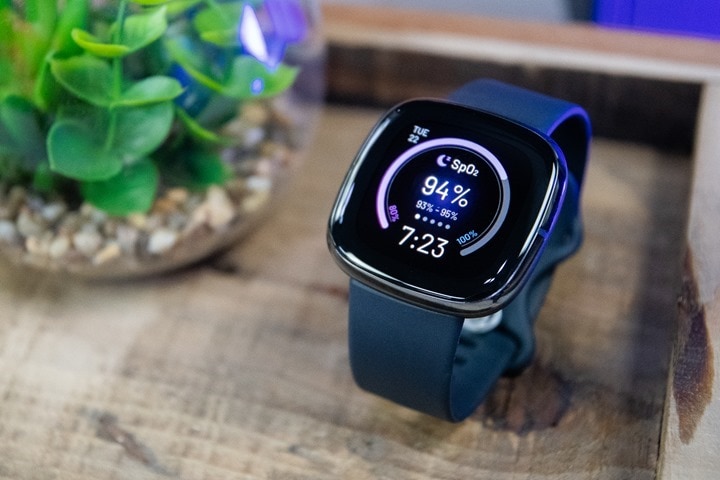
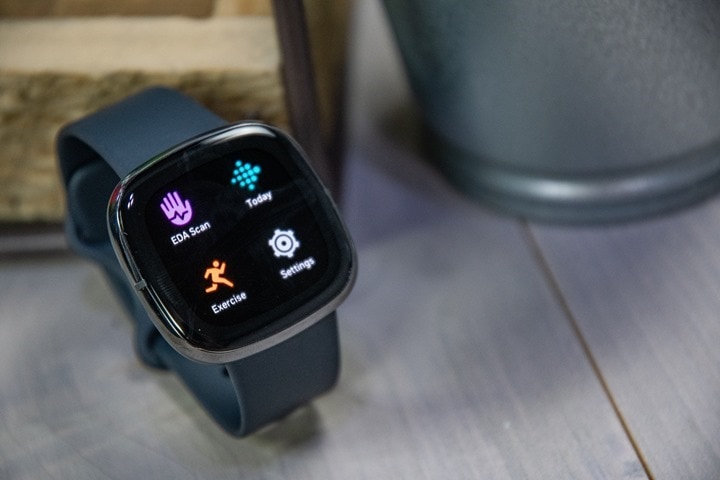

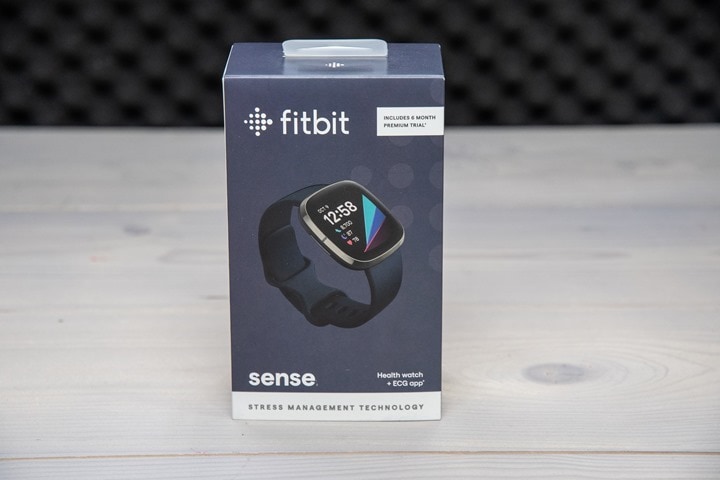
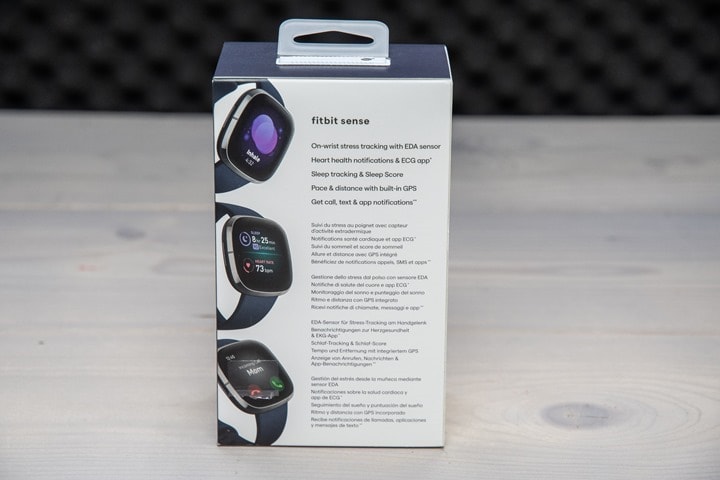
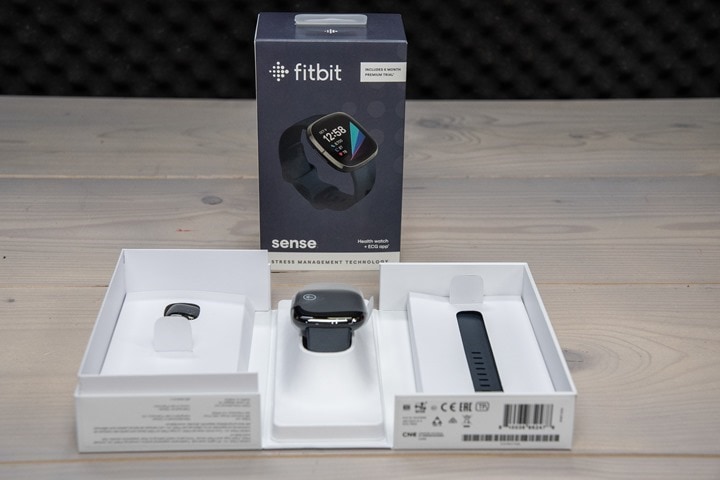

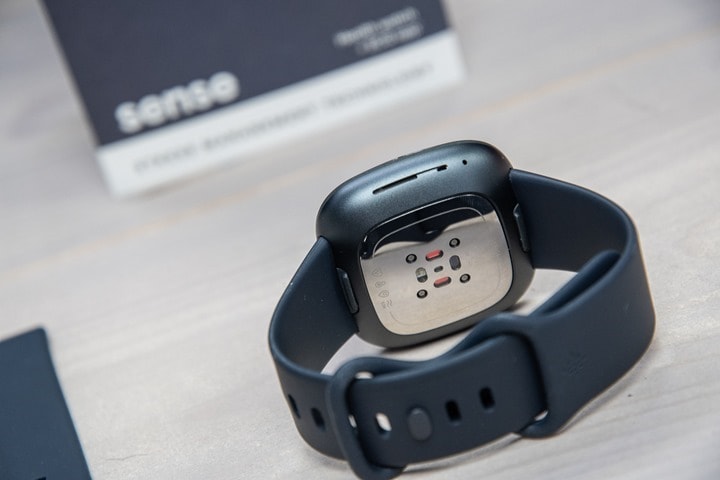
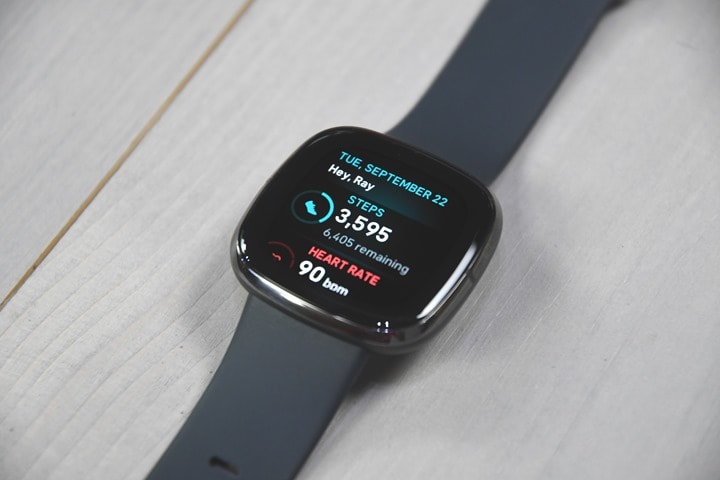
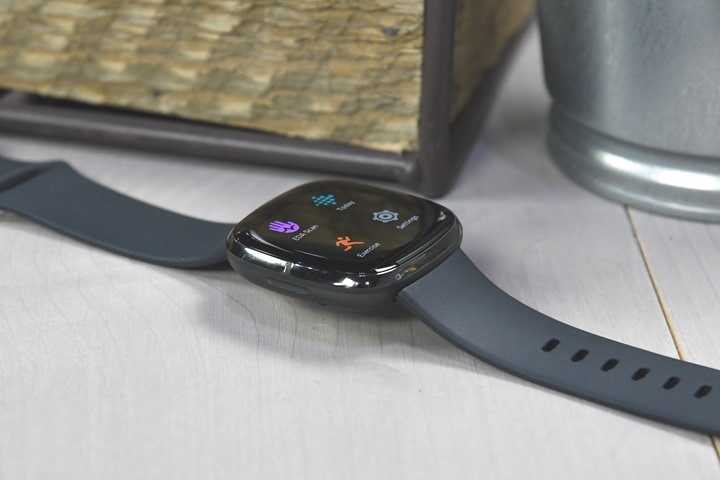
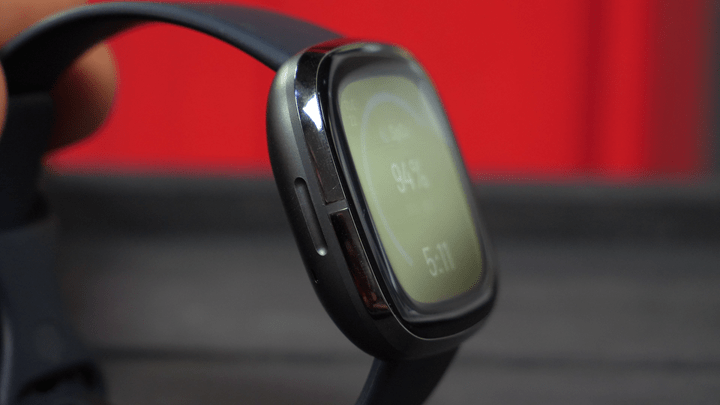
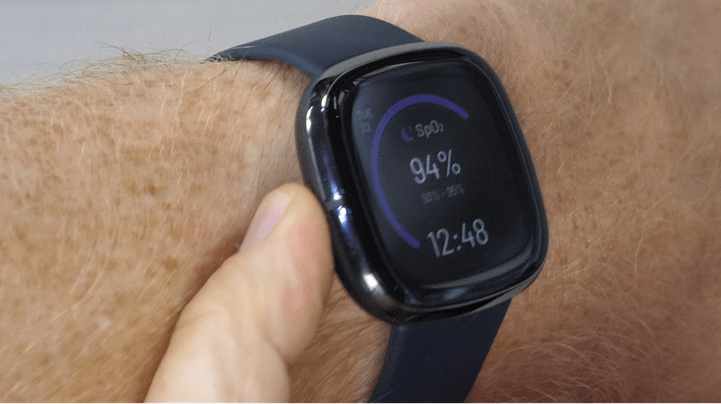
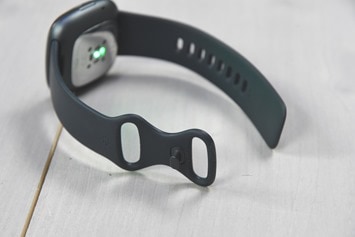
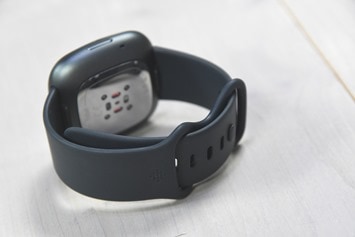
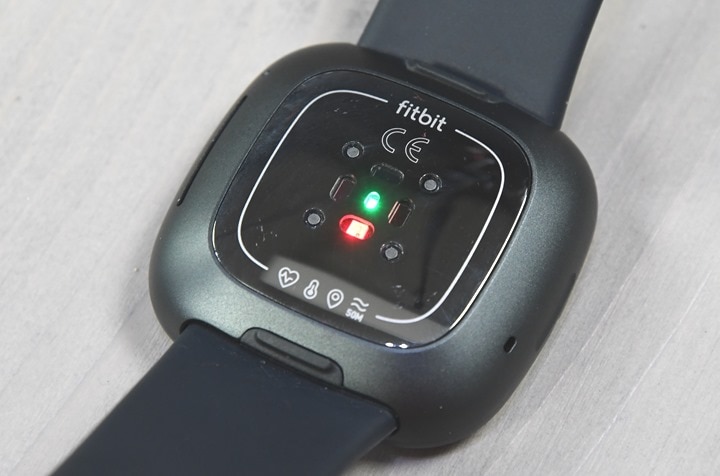

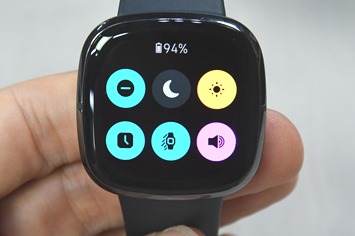
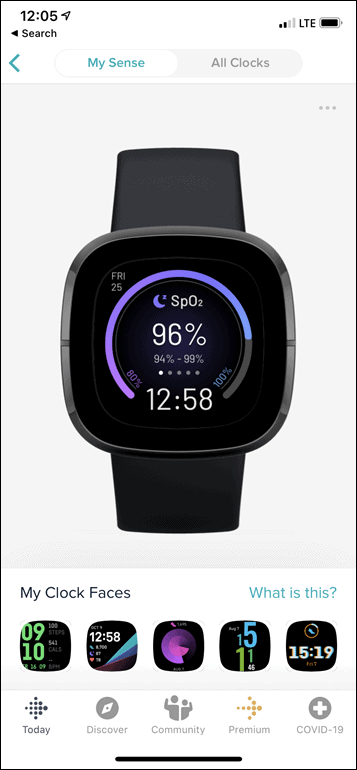
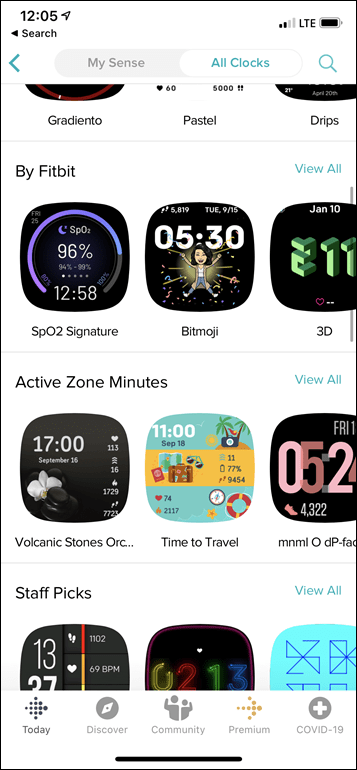
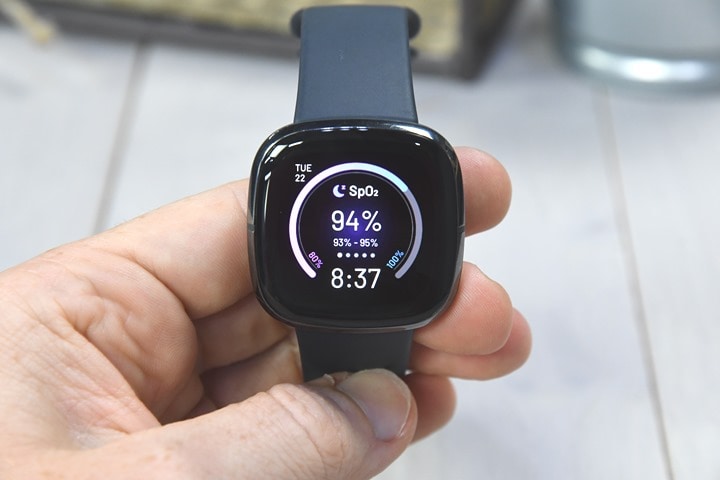
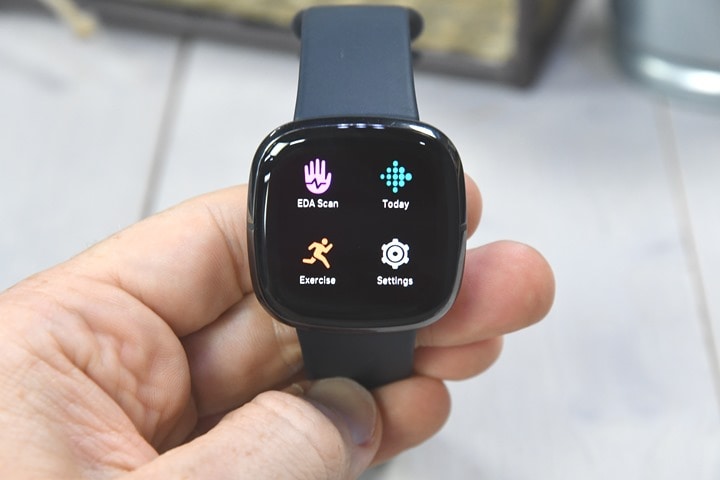
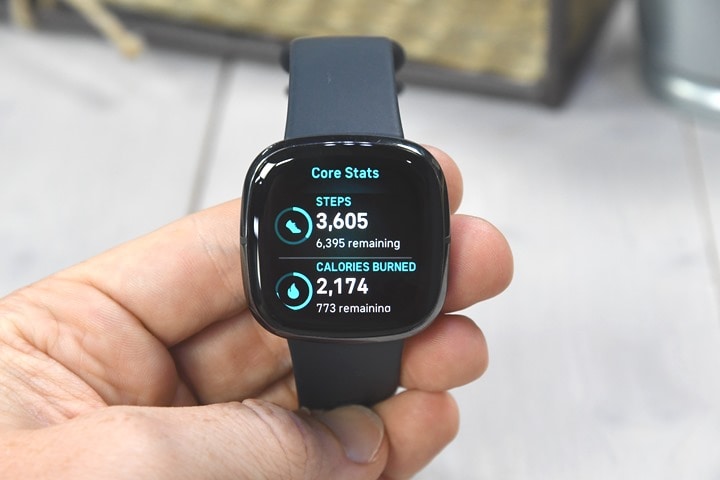
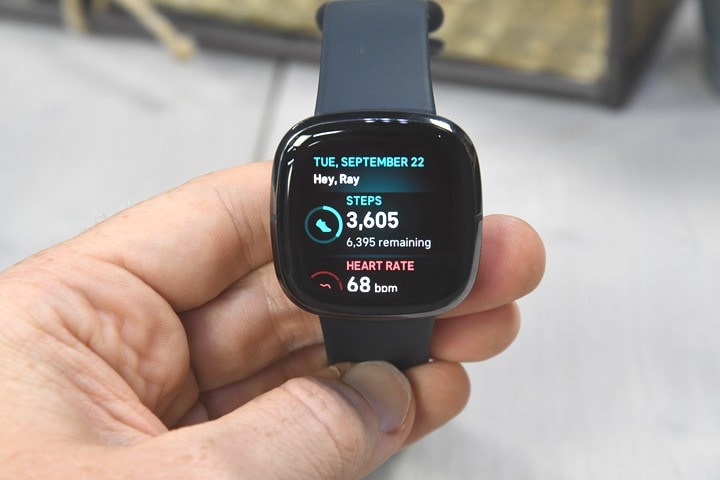

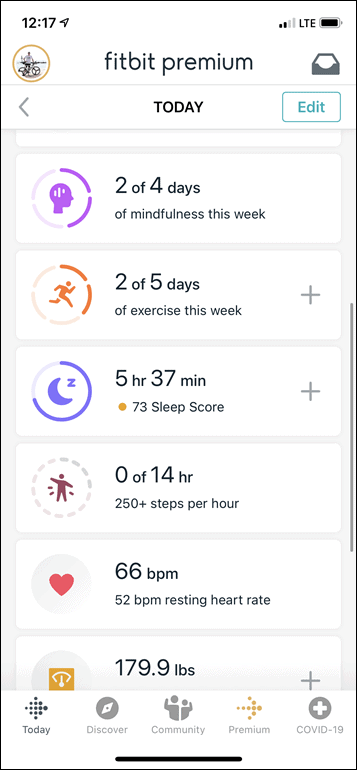
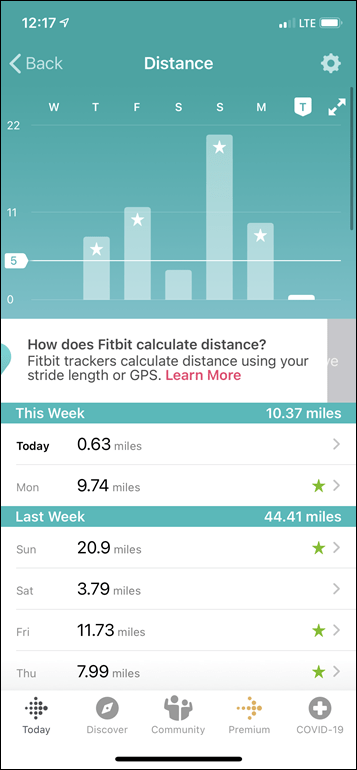

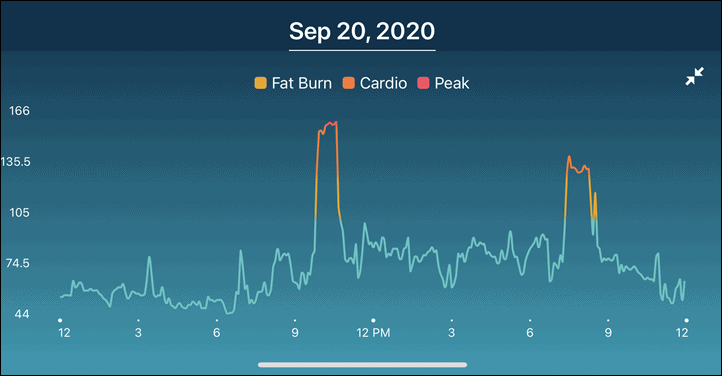
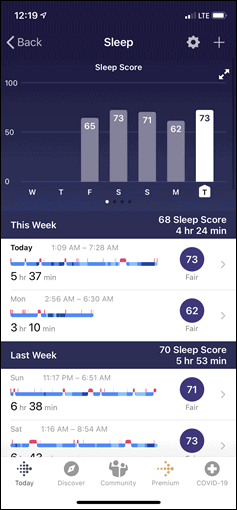
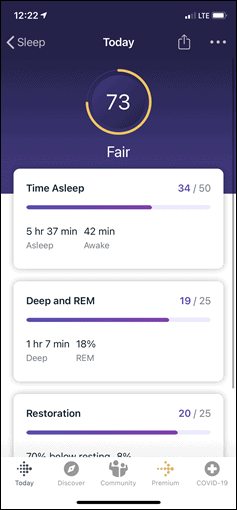
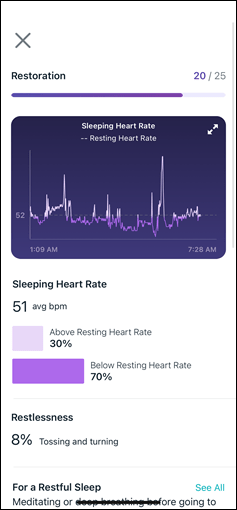

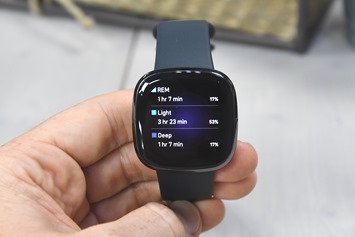
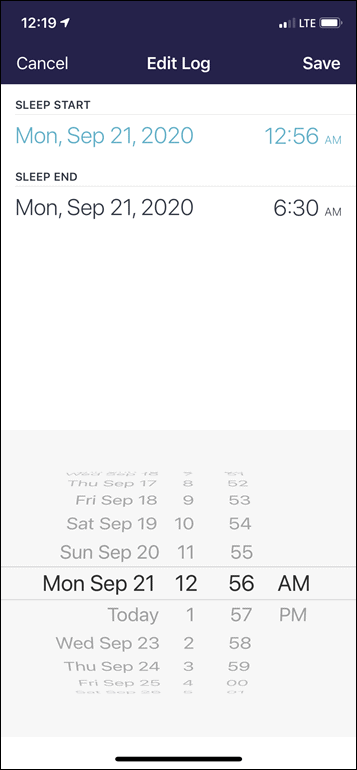
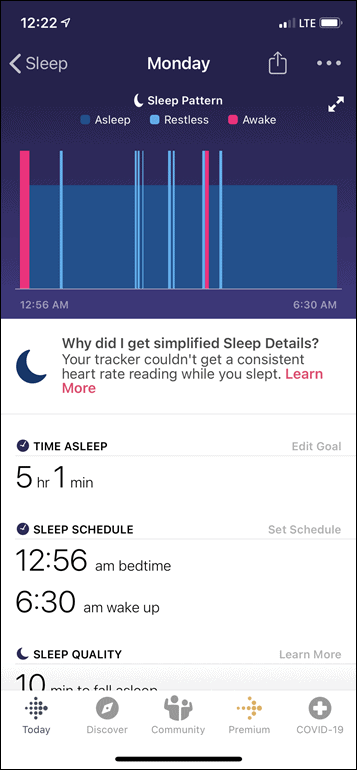
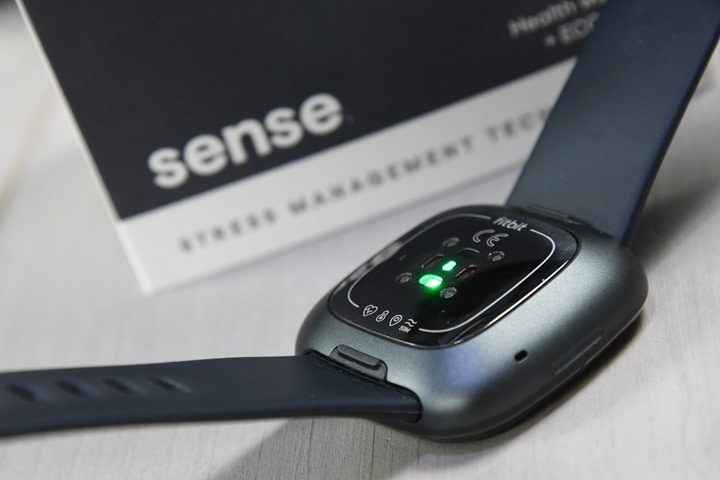
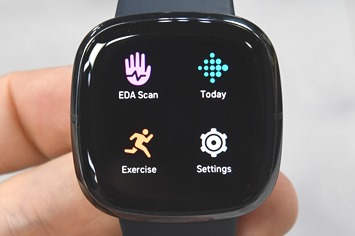
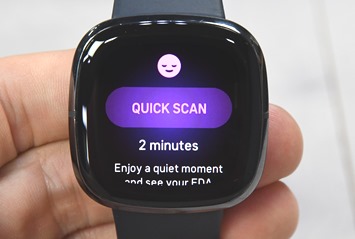
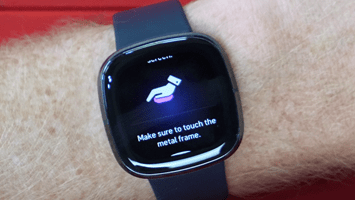
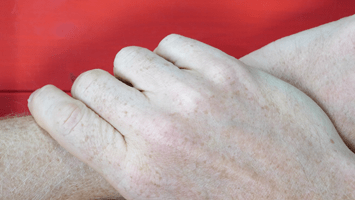
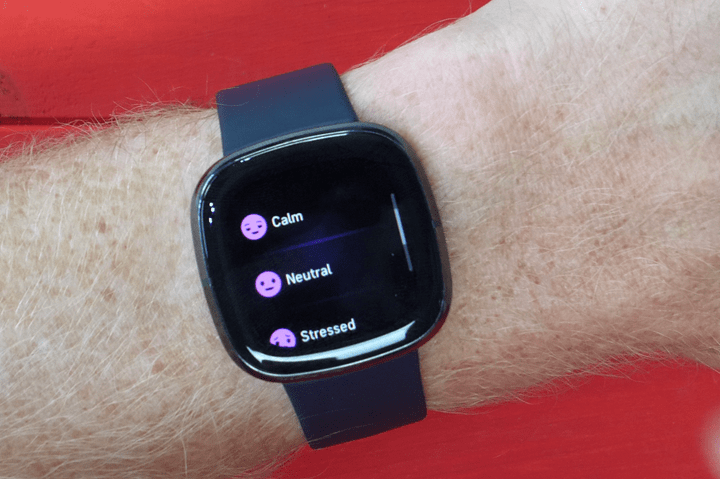
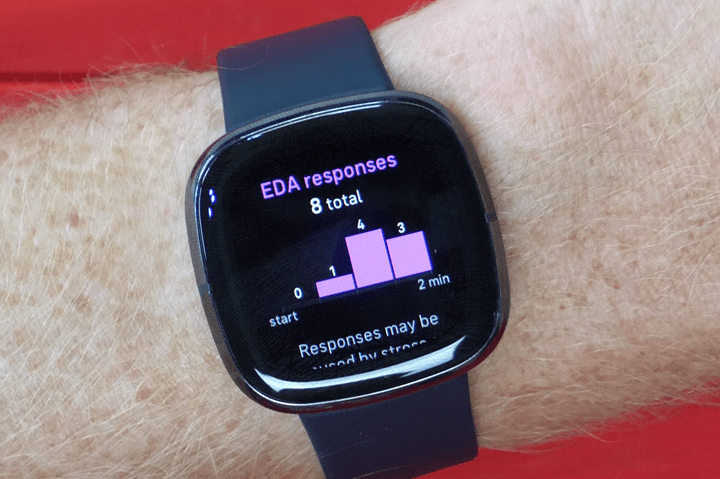

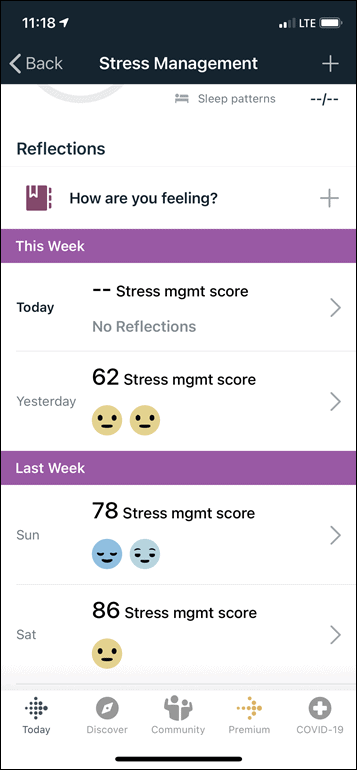
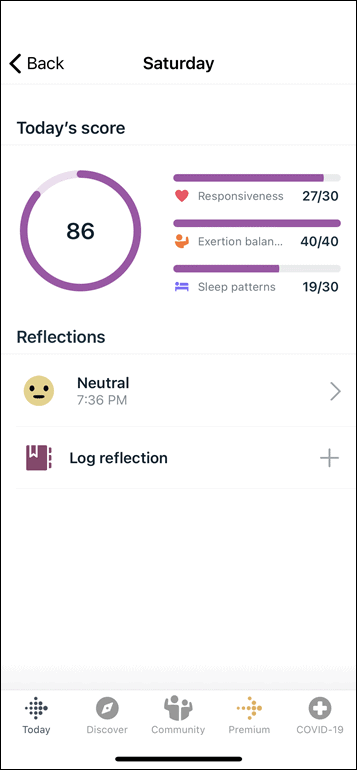
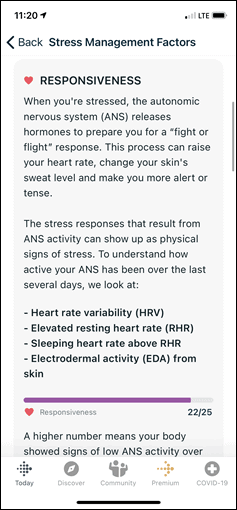

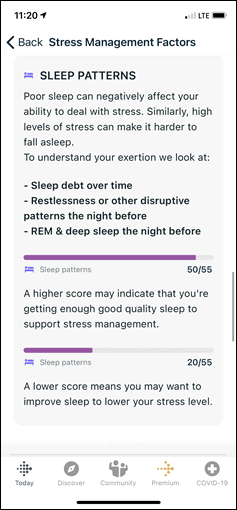
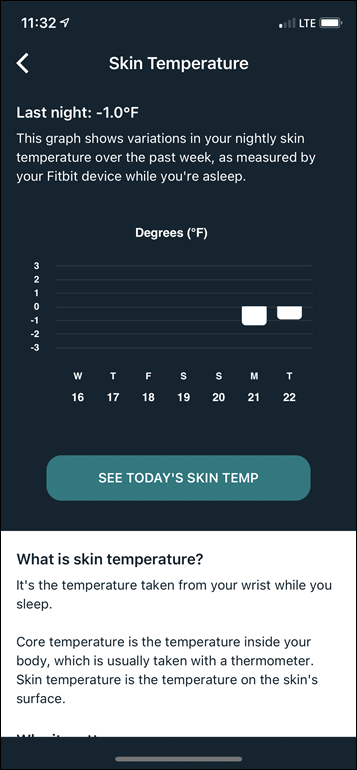

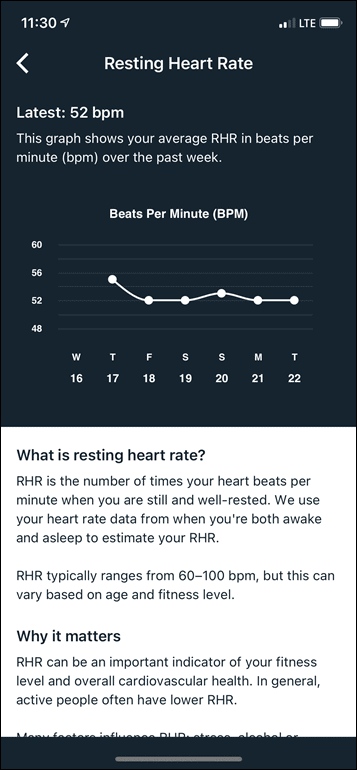
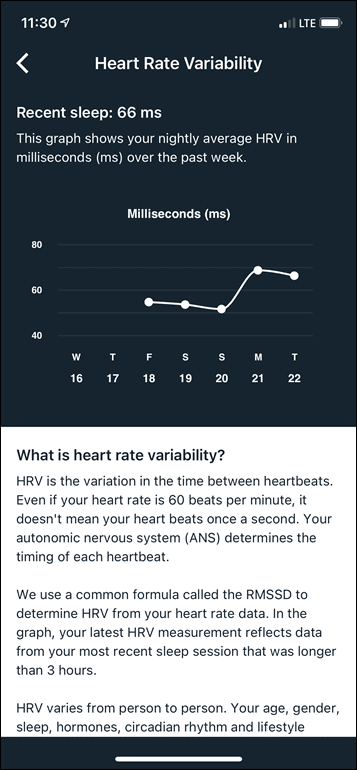
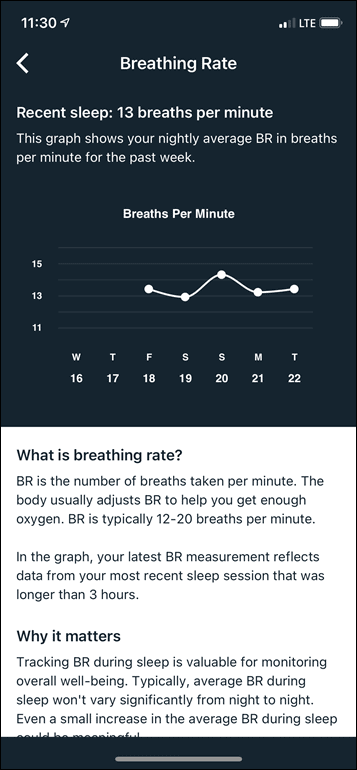
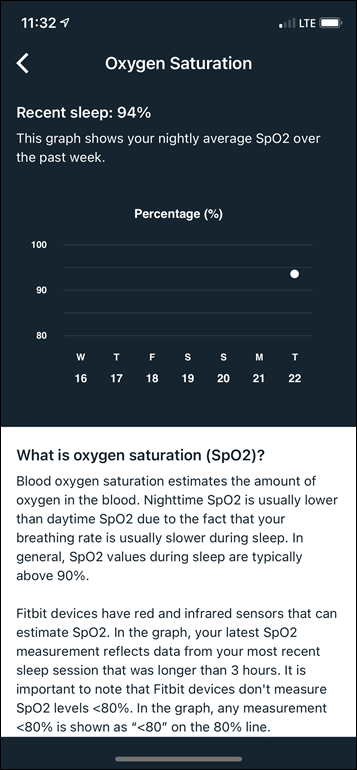
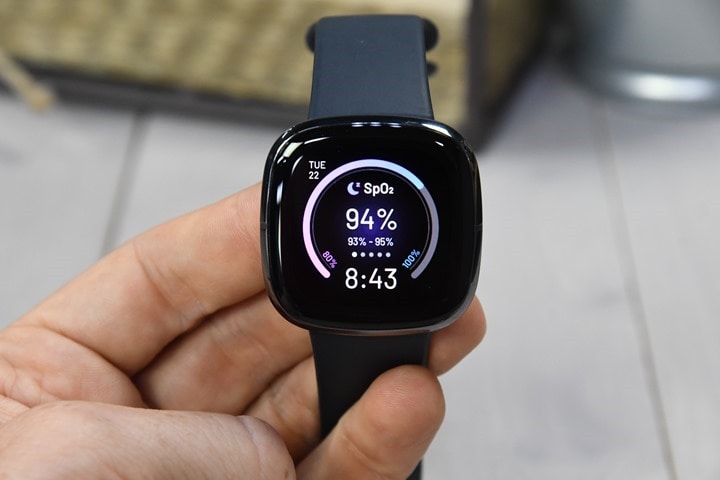
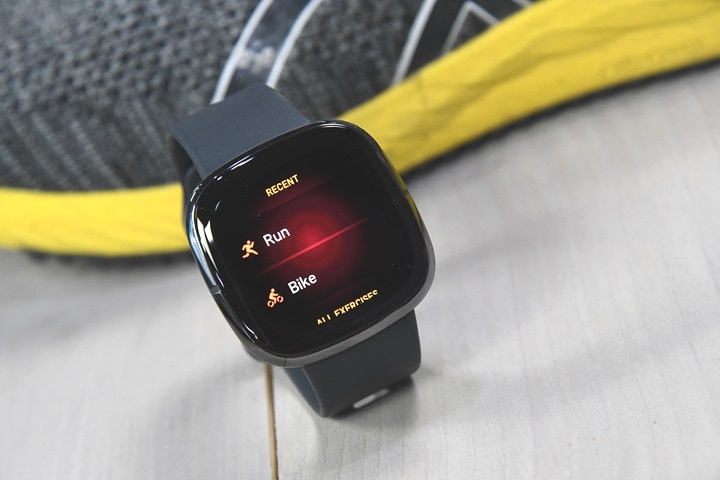
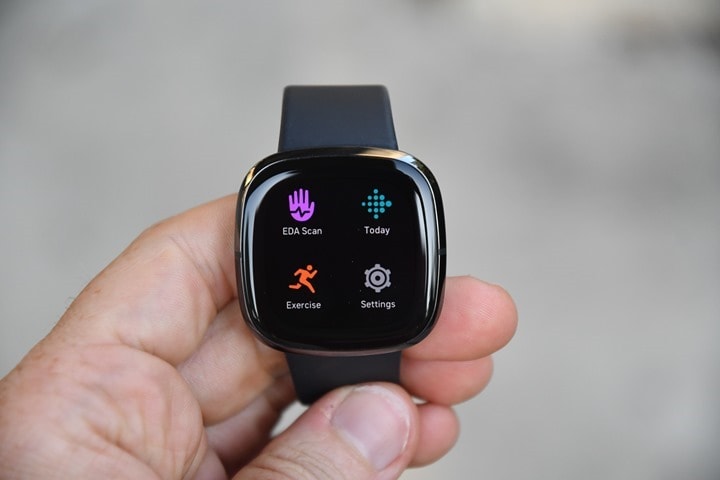
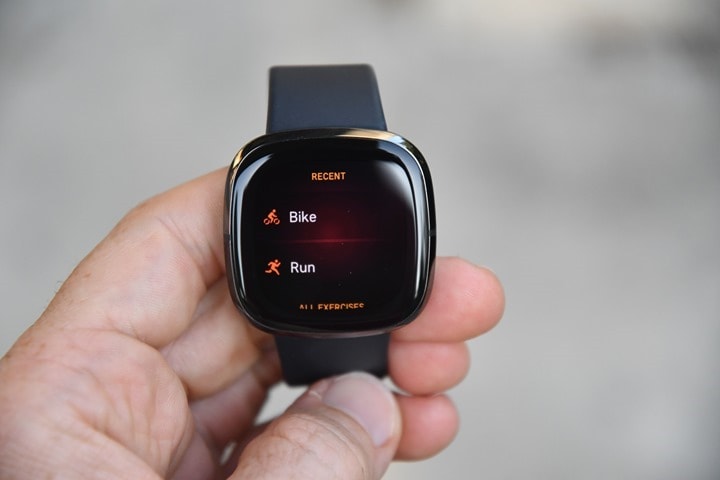
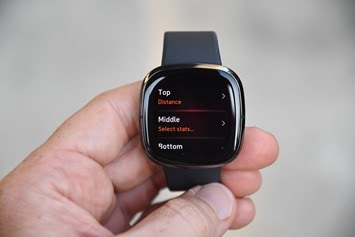
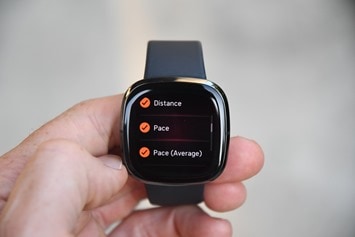
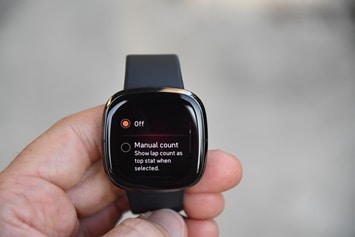

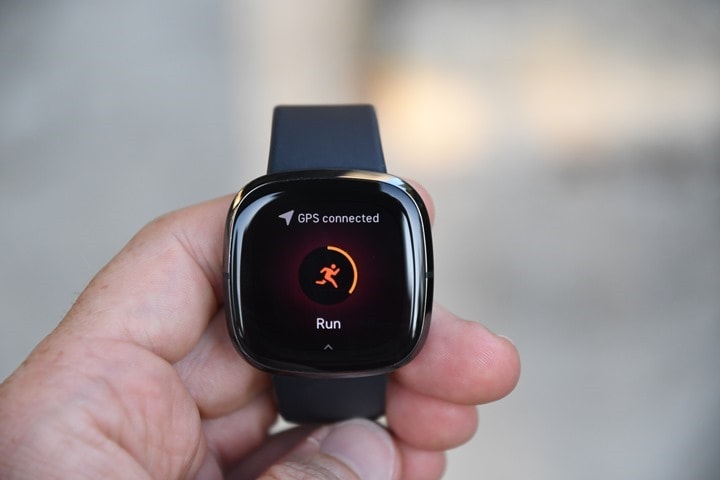




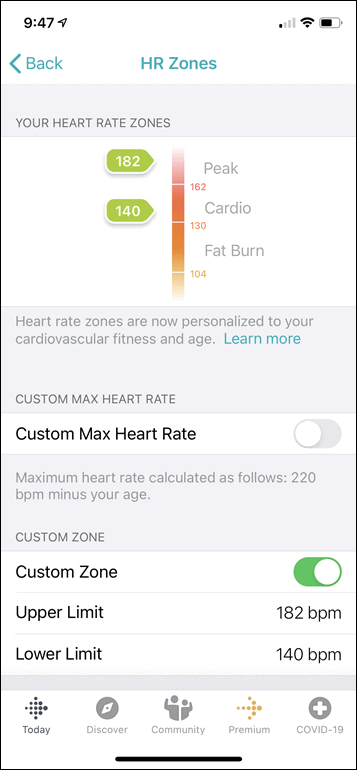
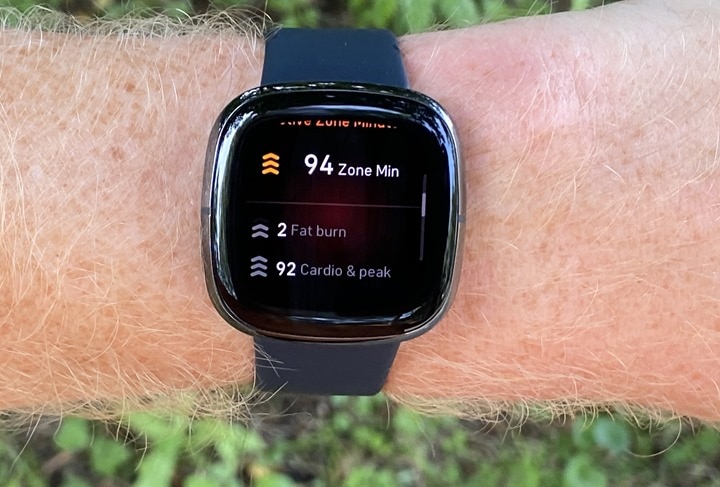
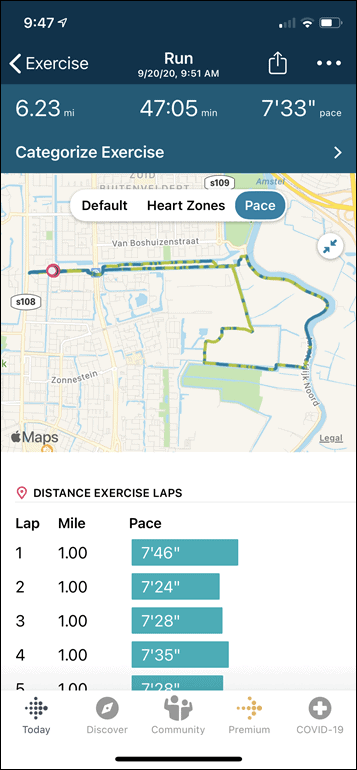
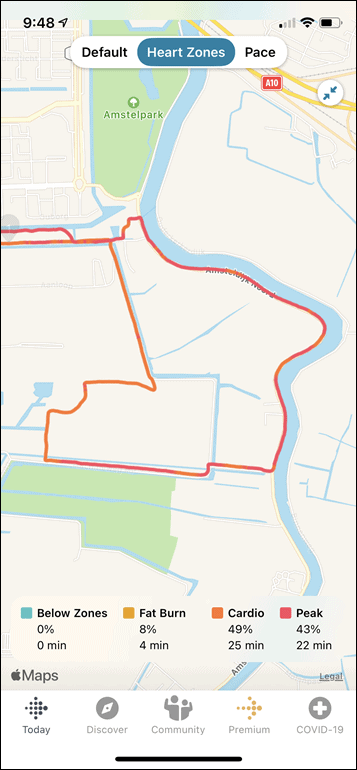

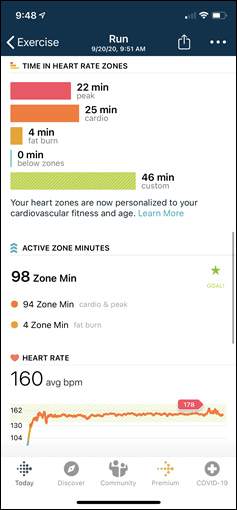
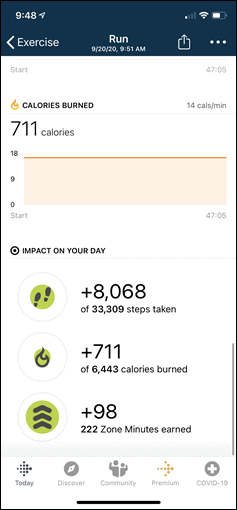








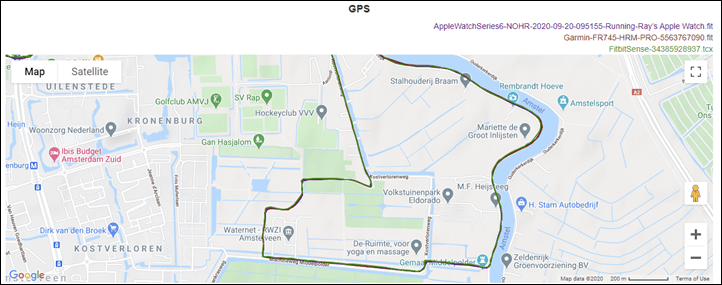

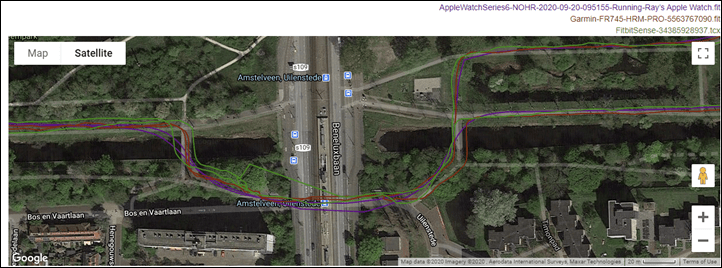
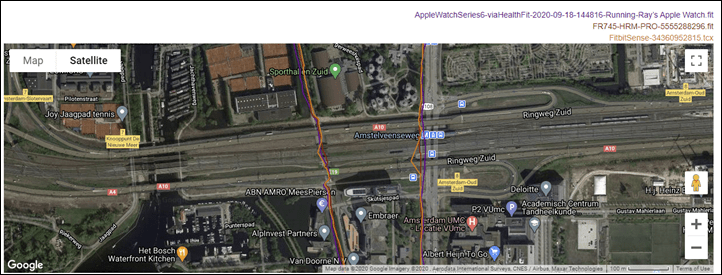
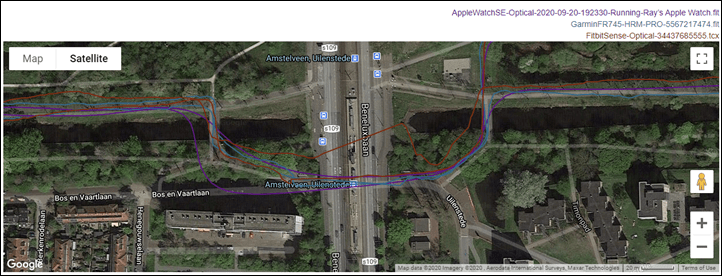
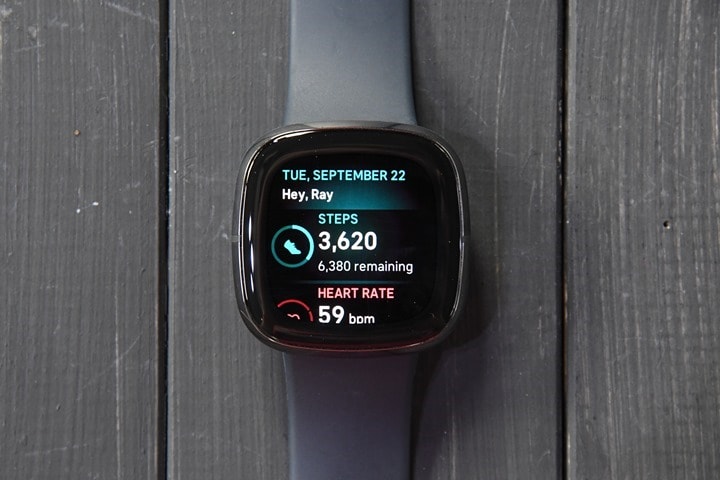
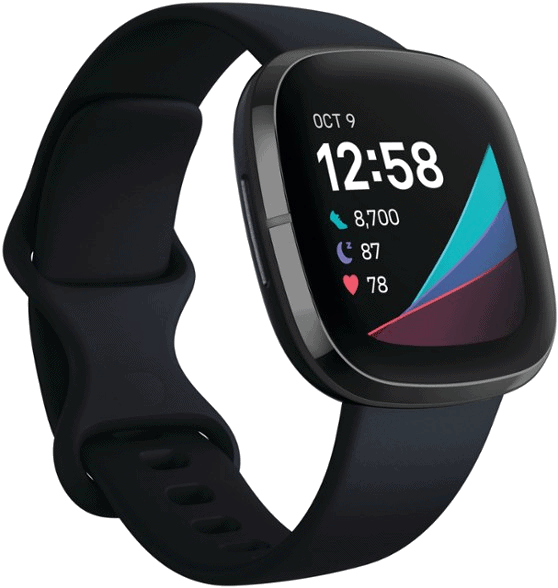





















Given fitbit have made such a big deal about the heart rate sensor and so much revolves around it, how can anyone buy this without a fix?
Is there any watch that offers a good blend of smartwatch, say taking a call from your watch, with good sports tracking and data? Was going to buy this as it seemed to be the only product (no apple) that offered a good blend of smart watch and fitness.
Thanks for the in depth review. They’re always a good read.
The taking the call part is honestly the tricky bit, at least cross-platform (iOS and Android).
My old Samsung Galaxy S3 Frontier was able to do that, but it does suffered from cadence lock & lack of web data viewer.
So in your view what’s the best alternative or to put it another way if you don’t want to be drawn, what’s its competitors (equivalent watch) from Garmin, Polar, Suunto, Coros?
Just to clarify on the point below what did they remove music wise, being able to store personal music or the comment from the user manual?
How difficult is it for company’s to fix heart rate accuracy with software updates? Or do you get the impression that it’s more on the hardware side of things?
Disappointing to hear that it’s somewhat half-baked. I’m hoping they can resolve some of the issues with software updates or an update to the app (so that you can make better use of the data). I really wanted to go back to FitBit for a wearable after not being able to settle on anything else.
Assuming the issues with this don’t get ironed out, what would your go-to wearable be for someone who is an Android user? I want to like my Garmin Vivoactive 3, but it’s a bit ugly and clunky. And, most Garmin watches seem to have more than what I need (and that’s reflective in price usually).
“…nobody stopped to ask the obvious question: How do I actually improve my wellbeing with all this information?”. Perhaps Captain Obvious works for Apple?
Thank you for saving me £300.
Pragmatically though, the marketing for this looks good and I suspect many Fitbit owners won’t read your review before they upgrade.
> “I’m not terribly clear on how 20+25+55 = 100”
Ummm, which part is confusing you?
My lack of coffee. Fixed already.
Thanks for a great review as usual… But you note you can store you own music… Are you sure about this? The user manual and the fitbit community forums, states it only stores music from paid subscriptions in Pandora or Deezer… Can you clarify this bit?
Thanks a lot in advance..
Interesting, good catch. I forgot they removed that! Kinda crazy really.
I’ve got the versa 2 and the HR seems fairly accurate, so it seems strange that they messed up on the new HR monitor. Did you review the versa 2 accuracy because it would interesting to compare.
Thanks for the review.
Yup, I tested the various Versa versions and all of them were fairly accurate for the most part. Fitbit noted though this is an entirely new/different optical HR sensor.
So if you were buying today for the recreational cyclist in your life would it be this, the venue or the forerunner 245?
Oh, be cautious of the 245. Garmin has had all sorts of Connect / cloud issues over the last few months. A Coros Pace 2 maybe?
If we exclude a massive international heist that’s resulted in a federal criminal investigation, and if we exclude one of the largest service provider outages in recent years (taking down piles of major sites including Amazon, XBox, Twitter, and others), then Garmin Connect outages are actually few and far between. Pretty rare in general.
I wouldn’t really make it a factor in a decision (for any vendor) at this point.
Well, you’d have to exclude also the subsequent unrelated CloudFlare configuration problems that they still can’t reliably solve. As on their forum and on reddit and suffered by yours truly.
The trouble with NOT making it a factor is that you’re reliant on a cloud provider (Garmin, in this case) that doesn’t understand their cloud and hasn’t got their tech support people talking to theirs ops people talking to their cloud provider. So that $400 gadget very quickly loses a lot of functionality.
Working in technology: there is one thing you need to remember: nothing is full proof. There is always going be better hackers and new vulnerabilities/exploits. No one is really safe. The best you can do is have good data backups and multiple save points. In a business standpoint, data/storage and maintenance cost. Garmin does not charge extra for this service, unlike Apple and some others are always looking for a way to charge you for something that is typically free from its competitors. So I am really happy with my $800 garmin watch. During the outage there was no functionally loss, my watch told me everything I needed to know, it just did have a place to review a detailed summary. Even the lower end garmin watches told me what I needed to know.
JK, come on, probably half of us work in technology and know this stuff. It doesn’t excuse their issues.
You should be happy with your watch. But you didn’t get locked out by CloudFlare for a week, which has happened to at least a decent handful of people this month. It’s a bit like saying that wandering a high-mugging area at night is safe because 97% of people each night don’t get mugged.
Ross, I use my 245 several times a week for cycling, and am pleased with it, for this, running, daily wear, smartwatch notifications, swimming, pretty much everything.
I do prefer to have my display quicker and easier to read while cycling, so also use a bike computer as my primary display, and the 245 as my primary data-uploader to Garmin Connect account.
full proof? Seiously.
How long did it take to find a GPS signal? Was it reasonably fast? I have the Fitbit Ionic from 2017 and it seems to take a few minutes to get a lock.
Yup, pretty quick there – usually within 10 seconds.
The first time mine connected it took a few minutes, every time after that it is about 10-15 seconds for me which isn’t bad. Looks like it had to “search” for satellites that first time.
Ah, fitbit.
I wear them for years, always paired with garmin watch of some kind. They are very hilarious implements, getting proper SpO2 support in Charge 3 (which i’m still not sure even there) took like a year with very inconsistent expectation management. And by ‘inconsistent’ i mean total disaster.
With all the quirks fitbits have, they still do play an important role: tons of eldery people use them and get benefits from additional motivation and monitoring.
I guess the problem here is that fitbit just not meant for any serious athletes whatsoever. General population seems fine with it, it’s fairly easy to use as long as you don’t think too hard at what metrics are you actually looking at.
More serious athletes are likely going with a Whoop or something along those lines. I think the trick with Apple, Samsung, Fitbit, etc., is to get people moving. Do I want accurate metrics…you damn right, but if their inaccuracies are “consistent”, then I can see trends that matter.
Heart Rate accuracy is a different animal, in terms of a life-safety perspective. That being said, if I am not someone suffering from a condition that could kill me (I’d be wearing something else to begin with), if the measurement is off by say 5-6 bbm, and it’s consistently off, then the trend can be tracked in terms of output. The bad outcomes are if I take a medical-grade reading on Monday and it’s 67 (my Fitbit says 72), and Tuesday the medical-grade reading says 67 (my Fitbit says 76)….now it’s far more of an issue.
Hoping that most of the accuracy issues will be fixed in software. I’m sure they will settle on the feature sets free vs paid but seems like that might take a while.. Wonder how many different teams worked on the product. Fingers crossed that 3 months from now they are in a better place (especially because I did preorder! New sensors too attractive not to, as an Android user).
Galvanic skin measure? Skin temp measure? Other (more common) measures? Hey, it’s the Basis watch reincarnated! That device had lots of potential, purchased by Microsoft (I think), injured a few people (allegedly) and … is no more. Huh. Is Fitbit paying attention to history? Do they have a plan for this uncommon data? Ugh, seems that I am in agreement with DCR. A poorly considered mess.
Subscribe me please
For a person who currently has a charge 3 because she realized she’s got to start gettig her ass of the couch, will fitbit be around for a lo g time or is this going to sink then? What would be the best option to change from fitbit? I am an android user, samsung is my phone of choice?
Google is attempting to acquire them, so assuming that passes regulatory approval (and undoubtedly, it eventually will) – then all will be fine.
However, I think the elephant in the room is that the Fitbit OS is going away. Google said so explicitly when they bought Fitbit as part of their announcement. Things will move to Wear OS. So, the long term future of this watch is probably limited.
It’s an odd situation; Google “purchased” the Fossil wearable tech (and some people) a year or so ago also. My recollection is that it was non-exclusive. Don’t forget that Fitbit purchased and destroyed Pebble four years ago. I would bet that Google will rebrand and refocus the Fitbit line.
If the last 6 years worth of their products is anything to go by this will die at 11 months, they will replace it then the replacement will die after 2 months. Then fitbit will tell you to shove it, here’s 10% off our cheapst watch. Oh and don’t complain on the forums or we will remove you.
Seriously don’t buy Fitbit products, I loved them but eventually I realized I was the sucker.
I just read another review article about the SENSE @MensHealth. I think someone drank the coolaide @MensHealth. Thanks for keeping it true Ray
I totally understand that not everyone is going to look into all the accuracy details at the same level that I typically do.
However, I was actually pretty impressed across the board that the vast majority of media/tech outlets actually all got it right in terms of being half-baked.
It would be interesting to come back with the follow up after couple of months, when they sort out the software and enable ECG.
Overall I’m leaning more towards Garmin Venu or Samsung Galaxy Active 2
Thanks for the honest and detailed review, great as usual!
It really helped me decide!!
If only other items I buy had reviews like this, my shopping experience would be so much better :)
I’m wondering if the mysterious “Other device” is of Finnish descent?
Nope: link to dcrainmaker.com
Aren’t Sp02 and Oxygen Variation essentially the same metric? I have been getting that reading for a while now (on my Ionic), without using that watch face. I don’t see your complaint here.
No, not really. The OV level that Fitbit has had was basically the result of them not getting SpO2 readings to where they wanted them after announcing them 1-2 years ago. So it’s this ‘no detail’ graph that just shows whether you’re fluctuating or not, with the only label being high or low. That’s it. It doesn’t actually tell you if you’re good or bad, just that you’re fluctuating more or less.
Which is quite different than the SpO2 readings which actually give you a real world number to work from. Whereas if you went to a doctor with the data from the oxygen variation charts, the doctor would most likely tell you that has no usefulness. They might say the same for SpO2, but they’d have actual data points to look at.
Ahh, thanks so much for the reply, this is very helpful. I don’t believe that most wearables will be that accurate, but I do focus on hoping that its inaccuracies are consistent so that I can see trends.
I am really on the fence on how to proceed, as my Ionic is on its last legs. I have a Samsung Galaxy Watch and Gear S3 Frontier…those things are rough to exercise in and sleeping in them is a challenge, to say the least.
Given your research, would you reccomend the versa 3 over the sense?
Honestly not sure yet. I literally just placed an order for the Versa 3 some 45 seconds ago. Says it’ll be here Friday.
After going through many Fitbits, all having died, I gave up in the company. I give Fitbit, and my brother who gave me a Flex, and then a Charge, full credit for getting me on a healthier path. I even started giving them as gifts. But I became very dissatisfied with Fitbit’s quality. Customer support was ok, but that only gets you so far. I switched to a Garmin FR235 (black friday amazon deal last year), and couldn’t be happier. If you buy fitbit, I highly recommend an extended warranty.
Thank you! I have wanted to ok purchase the versa 2 since last Nov. However, I felt that a newer addition would be launching and wanted to wait to see its features. Then they launched the versa 3 and sense and havent been sure which to get. I have a samsung galaxy 8+ phone but I am not a fan of their smart watches. I am a personal trainer and feel that their smart watches are too big and bulky. I was drawn to the versa since it was smaller like the apple watch. Basically, I want a watch that is going to allow me to monitor my fitness and still have capabilities to check and respond to texting & notifications via smart phone. When I saw that the sense would allow me to answer phone calls, I was sold! I felt like it was the best of both worlds for me. Although after reading the review I’m skeptical. Please help! Any suggestions on a specific fitness/smart watch that would be best for my needs?
I’ve had good luck so far. After owning a fitbit, fitbit charge, fibit charge 3, fitbit versa, the only one that failed was the Charge 3. It stopped tracking my HR so I contacted fitbit, they sent me a replacement no questions asked. My first charge eventually fell apart but I had it for so long I didn’t complain.
Thank you! I have wanted to ok purchase the versa 2 since last Nov. However, I felt that a newer addition would be launching and wanted to wait to see its features. Then they launched the versa 3 and sense and havent been sure which to get. I have a samsung galaxy 8+ phone but I am not a fan of their smart watches. I am a personal trainer and feel that their smart watches are too big and bulky. I was drawn to the versa since it was smaller like the apple watch. Basically, I want a watch that is going to allow me to monitor my fitness and still have capabilities to check and respond to texting & notifications via smart phone. When I saw that the sense would allow me to answer phone calls, I was sold! I felt like it was the best of both worlds for me. Although after reading the review I’m skeptical. Please help! Any suggestions on a specific fitness/smart watch that would be best for my needs?
I would not be comfortable testing this watch in water (Swimming) I’m on my 4th ionic which all died while swimming in shallow water!
I’ve now been told that I no longer have warranty therefore I refrain from using it in water.
Hopefully Fitbit have recognised the fault and corrected this in this model otherwise there are going to be a lot of unhappy people.
I really relied n loved my fitbit versa however the screen has been blank for the last 6 weeks i bought it from currys 2 years ago when i retired grom nursing i am so list withought it and no one cares after all the years i spent caring no one cares about me
Based on your experience with devices in general and Fitbit in particular… Do you think the hardware is sound? Could this be a decent device a couple of firmware/app revisions from now? I would REALLY like to have ECG on something in the Fitbit ecosystem, so I’m already on hold for certain until THAT update ships…
Thanks so much for your in-depth review! For those of us with Android phones who were looking forward to the Sense, but now are not going to buy it because of the reviews, what would you suggest for a fitness-capable smartwatch? Do you have any opinion on the Samsung Watch 3?
I know you already did it all so probably won’t add this but…any chance you could do a comparison of accuracy between this and say a versa 2?
Really wondering if the issue is just that they have not tuned this new sensor enough for average people, and that with more data it will end up being more accurate. In the meantime I am looking for a new gym watch as my versa 1 is starting to die and debating which to go for. Starting to think versa 2 then wait 2 years and get whatever fitbit turns into after Google finishes gobbling it up.
What is your take on the sensor accuracy improving? Did that happen when fitbits first hit the market? ie they sucked at first but managed to fix the software to become decent.
I would really like to see the versa 2 HR tested as well because I use it and have always presumed it to be reasonable accurate. It’s been stated that it has a different algorithm to the original versas and claims to be more accurate!! I would love to know for sure if possible! Thanks for the reviews anyway, the Garmin venu sq looks good value.
M Pritchard
I included the Versa 2 accuracy data here: link to dcrainmaker.com
I also used it beyond that. No issues with HR.
So, looks like I should stick with my Ionic for the time being, huh? I can deal with the GPS lag. It only misses chunks of my routes every so often, and I can deal with that.
I noticed the new tile available, and it pretty much does all the extra stuff, save for the stress score. That waz probably the one new thing that interested me the most.
I am supposed to be getting the Versa 3 on 25th September but after reading this review and the comments I am cancelling. Firstly the versa 3 has the same heart rate monitor as the sense which doesn’t appear to be accurate. Secondly, it appears that you can’t put your own music onto the Versa 3 like you can on the versa 2. So for both these reasons I’m cancelling. I’m thinking about the Garmin Venu Sq music now. My Versa 2 is good but doesn’t have the GPS which is why I pre-ordered the Versa 3.
Thanks for pointing this out. I have just been onto the fitbit forums and you are right you can’t put your own music on. I have the Versa 2 and you can – seems totally stupid that you can only do it with Pandora or Deezer with the 3. I’m cancelling my Versa 3 order now.
So seems like those with the versa 2 are happy? I was going to get it then realized they were launching the newest edition which is why I didnt; however if it is better I will just go with it especially since it’s cheaper now. I have the free pandora app. And I’m an amazon prime member. Can I use my music through either one of those on the versa 2? I also looked at the garmin venu 2 as well.any thoughts on which is better between the versa 2 or venu 2??
I’m with you it’s doing my head in trying to find a watch with a good blend of smartwatch features and health certainly on Android. I have a huawei watch gt2, it has excellent battery life, you can take calls on the wrist (a feature i result like) has firstbeat metrics. However the heart rate monitor is terrible and you can’t reply to notifications. I like garmin watches but you can’t take calls on the wrist, was thinking galaxy active 2 but the heart rate monitor isn’t very good. I was hoping that the versa 3 would do the trick but looking at the sense the heart rate isn’t up to scratch. The search continues
Thanks for the fantastically detailed review. Unlike Fitbit it didn’t leave me confused. I am wondering when the bungling will end. They have great potential just poor implementation. From the customer forums (which seem to have the process of welcoming each poster well ingrained in their habits) but are effectively useless unless you encounter another user to the constantly varying premium feature set. I expect some improvements might come from an approval of the Google acquisition. Maybe assistant immigration finally? How about standard media controls (if i can skip to the next song on any headset why is this so hard?) To phone call support (Garmin can allow a user to answer on speakerphone… what good is it to answer on handset when your phone is on the table?!?) Your documenting the clutter and lack of actionable information is the icing on the cake. I’ll be waiting to see if they can make improvements before considering an upgrade. Thank you!
I’ve just dumped the Versa in favour of a Charge 4. It’s just better, if not better looking. Some issues with sync. When you sync your fitbit with your phone and expect instant analysis of, say, exercise or sleep, it’s not going to happen. The calculations happen on Fitbit’s servers so syncing again after a few minutes should update the app and Fitbit.
I’m torn between the versa 3 and the Garmin sq. They look similar and about the same price. I had the original Versa and the connected GPS was always off. The 3 FINALLY has its own gps. Have you tested if it’s accurate or should I assume it works just as well as the Sense?
Going to go out on a limb based on other comments / no testing myself. I think the Versa 3 uses the same sensor as the 2. Which likely means the accuracy is similar. I’m waiting to see what happens to be honest.
Hi – I had the versa 3 delivered yesterday but after reading both reviews I’m taking it back and getting the Garmin Venu Sq. The versa 3’s heart rate monitor is supposed to be the same as the sense and by this review inaccurate. Plus you can’t put you own music onto the Versa 3. I think the Versa 3 looks nicer and there are probably loads of straps but it is going back. Picking up the Venu Sq later. I hope it isn’t too bulky.
Wow ! I really wanted to buy this because my fitbit charge 2 has cracks on the screen and is just a bit old, and I like the features this watch has… But the accuracy problems with heart rate is a big no no ! Which fitbit would you recommend the most, for someone who wants to upgrade from a charge 2 ?
Hi,
Fitbit just announced the 5.0 os was this the one you tested?
Thanks
Yes, you can’t get a Sense or Versa 3 without it.
Well, in spite of all of this… decided to purchase one nevertheless. I’m a sporty guy, but I’m not one for contests, marathons and so on; so I hope it is good enough for me.
Either way, I wanted a smart watch with something I had in the past and have been waiting for around a year after my previuos Garmin broke down: a smart alarm/wake-up feature, something that Garmin has yet to implement… hopefully, this Sense can be improves via patches and I’ll return it if it’s really bad… hopefully not.
Thanks for the informative review!
Hi
Do you have a plan to do a review of Fitbit Versa 3?
Yup, already on the wrist!
I have used heart rate monitors over several decades including in the 80s the early Polar devices mostly for cross-country running.
I tried several devices (principally Polar and Suunto) and have gained a reasonable albeit personal understanding of their usefulness and limitations. I’ve always selected particular HRM’s best suited for the activity being monitored.
Currently, the HRM’s used are the Polar H 10 for all gym training work and Polar OH1 for swimming (the latter favoured following the continued failures of the Suunto Smart Sensors). Both Polar HRM’s are used for other outdoor activities depending on the severity. I have tried Suunto wrist sensors and have found them to be erratic to the point of useless for all activities.
The Polar H 10 is a good reliable HRM that seems to work well for me under most circumstances and was used to compare measurements made with the Fitbit Sense. Given past failures with wrist-based sensors I was surprised how closely the Fitbit Sense measured heart rate compared with the readings sent from the Polar H 10.
Indoor Rowing consistently showed heart rate 2 to 3 beats below that measured by the Polar H 10.
Indoor Spinning (recumbent) consistently showed heart rate 1 to 2 beats above that measured by the Polar H 10.
Elliptical trainer (legs only) consistently showed heart rate to be in agreement with that measured by the Polar H 10. Also there was close agreement between Polar and Fitbit Sense HRM readings when standing still.
Rather oddly human bodily orientation appears to alter the comparison between Polar and Fitbit!
This is a quick heads up…. I’ll add more comparisons including various outdoor activities, swimming, weightlifting (hydraulics) and punch bag work although I’d be amazed if Fitbit proved of any value for the latter.
Outstanding review? Can you do an update now that they have pushed out an update to add ECG? It should be enabled in North America.
Lol, meant “outstanding review!”, not a question
I bought versa sense to replace my versa 2 with below reasons:
1. i thought spo2 available on my wrist at any time.. a HUGE disappointment where versa sense can only “sense” my spo2 level overnight when i was sleeping
2. I thought it was compatible to iphone, which could RECEIVE CALLS n reply text as i read somewhere but NO it doesn’t
3. I could not install ECG tracker in my device at any level and i have searched for assistance and still FAIL
4. Temperature was MANUALLY logged in into your device…
why do have to pay USD 300 plus for a minimal function? There were better smart watch that could do all the above functions and EXTREAMLY CHEAPER.
Owh, not to mention.. once you purchased the fitbit sense, all apps you enjoyed to live with will soon vanish after 6 months..
In my opinion.. please study many brands of smartwatch before purchasing any.
Disappointed customer.
I bought versa sense to replace my versa 2 with below reasons:
1. i thought spo2 available on my wrist at any time.. a HUGE disappointment where versa sense can only “sense” my spo2 level overnight when i was sleeping
2. I thought it was compatible to iphone, which could RECEIVE CALLS n reply text as i read somewhere but NO it doesn’t
3. I could not install ECG tracker in my device at any level and i have searched for assistance and still FAIL
4. Temperature was MANUALLY logged in into your device…
why do have to pay USD 300 plus for a minimal function? There were better smart watch that could do all the above functions and EXTREAMLY CHEAPER.
Owh, not to mention.. once you purchased the fitbit sense, all apps you enjoyed to live with will soon vanish after 6 months..
In my opinion.. please study many brands of smartwatch before purchasing any.
Disappointed customer.
Hi – Any updates on the Healthg Metrics Dashboard being made free?
”This is part of the so-called ‘Health Metrics’ dashboard that was premium only but is slated to be free.”
I’m actually shocked that Fitbit depends so heavily on 220-age for maxHR, and zones. If you happen to be a statistical outlier (saw some studies that suggest nearly 50% of all people are more than one standard deviation away from that) then you’re out of luck – as the maxHR and custom zone settings cannot be saved in the iOS app, and always revert to 220-age after a few days when setting this on the website. Fitbit won’t even acknowledge that this error exists – since June. Honestly, while I generally like the Fitbit devices, this lack of functionality, or lack of fixing mistakes makes them useless for me. if I was 15 years younger I could not even set a maxHR as the maximum I can use on a fitbit is 220. 15 years ago I was roughly at 225.
Wish I had seen this before buying the Sense.
The HR monitoring is, indeed, a “dumpster fire.” On a spin-bike session earlier today, it was *wildly* off (as confirmed by both the 1/5th-the-price-Scosche Rhythm+ and manual counting)… often by 20+ BPM!
I mean, if they can’t even get the HR right, how could anyone trust that they’re getting the ECG or sleep monitoring or anything else remotely right? (not to mention the lack of any sort of actionable guidance, as you’ve noted).
Mailing it back… :(
Just curious Ray – Have Fitbit reached out to you at all re: any plans to improve the HR Accuracy of this? Curious as to whether this is a bug that can be fixed or an inherant issue to the hardware of this watch?
I came to the comments to check the same thing. It’s now been almost 6 months and I wonder if there are any updates from Fitbit to fix it.
Great review, thank you for that. Have you tested the Sense again? I’ve heard some people talk about a fix for the heart rate Sensor, that should work fine right now?
Great way to save time in search on Fitbit Gallery is TTMM-S app. It is clear, useful and elegant clock face collection for Fitbit Versa 3 and Sense. Now you can easily browse, add to favorite, and upload awarded (Red Dot Design and finalist of IF Award Design) clock faces with weather alerts and detailed air quality info. Yes – TTMM-S for Fitbit Versa is the most advanced collection for Fitbit. Now it is available for Android with 3 days trial. https://ttmm.is
Thank you for this review — wish I had read it about 6 months earlier. Despite my experience with the Charge 3, which had constant syncing issues and died an early death, I decided to “upgrade” to the Sense. As you said, the HR is a true dumpster fire. I mean, it showed me getting into my max HR zone while on the driving range (fortunately, I manually checked my pulse to make sure I didn’t really have to go to the ER!). The pulse ox, which was what I was most excited about because Covid, is completely useless as there’s no way to spot check and I’m really not interested in an overnight average. And the syncing issues…OMG! Sometimes it would sync, usually after a long wait, until now, when it won’t sync at all despite reloading the app, reinstalling the device, and every other trick listed on their support page.
I hope someone replies to this – usually the comments come hot and heavy after a review but then responses peter out.
1. I have a charge 3 – would I get better metrics with a newer ftbit – charge 4, versa 2 or Sense than I get now?
2, Any word whether fitbit improve the heart rate accuracy and is this problem only for workouts or does it extend to “the rest of the day” heart rate too?
Hey Allan – this may sound like the rant of a bitter ex lover, but I don’t think the metrics will improve. Let me explain. I’ve had Fitbit for years. One of the things I noticed as I got more serious about fitness was the lack of accuracy in the heart rate, the other was the way the resting heart rate didn’t seem to make ANY sense. For me I found that having a few beers affected my resting heart rate that very night – however the change would be reflected in Fitbit over a period of DAYS. Likewise in the other direction. When I researched I found companies like Garmin actually had a knowlege base article explaining how they calculate resting heart rate – that they base it on the american heart associations definition, and where there was not a resting rate measured they use the lowest reliable measurement. So then I re-asked Fitbit support to clarify this issue. They told me the method “was a proprietary formula” – I asked how long the averaging period was – to which they replied “they couldn’t get into the details of the calculation”. How the hell they think that makes sense to anyone who asks is beyond me.
That said, during these tests I had borrowed a Garmin Vivoactive 3 music and had been wearing it on my other arm. I swapped them around to ensure that wasn’t a factor. The garmin measurements made sense. RHR matched, and the heart rate matched a blood pressure cuff when checked – Fitbit never did.
I was holding on to the Fitbit because it was paid for.
Then it broke. This is the 3rd “swim proof” fitbit that got broken with a dunk in a pool, a sink or a showed (all 3 happened). And to top it off, it was after warranty. So they offered me a coupon off a new one. And I paid twice the price for an awesome Garmin. Which adds more functionality than I ever had before and less that I don’t need.
So as I promised the Fitbit support people I wrote back to your question – because I am that horrible ex who’s still a little salty about the 10+ years I wasted ;-)
Going to have to add this to my other posts lol
Cheers.
m
Thanks Mitch. A fine report. I like the Fitbit App but will replace mu charge 3 with only a charge 4 when it goes. It will not be a large investment.
Has the Sense improved since initial release and this review? Keen to know given the Ionic recall
As someone who also got the recall notice and did as much research as possible before taking advantage of their deal, I happened to find a “interesting” topic on their message boards. Made on October 2020, it was filled with users complaining about the poor Heart-Rate Sensor. They finally got a mod’s attention on December 2021 (Over a year later.) And the response?:
“Our team is aware, but may not be able to provide a fix in the immediate future. We’ll continue to monitor the situation, and keep our team informed of the impact to you and other members. I apologize for the experience that you’ve had with your watch, please know your feedback hasn’t gone unnoticed and we’ll keep working to improve our products.”
The mod then closed the thread. As of this post, I found another popular topic of the Sense having another technical issue with a update, causing the Skin Temperature feature to not work properly.
Many thansk